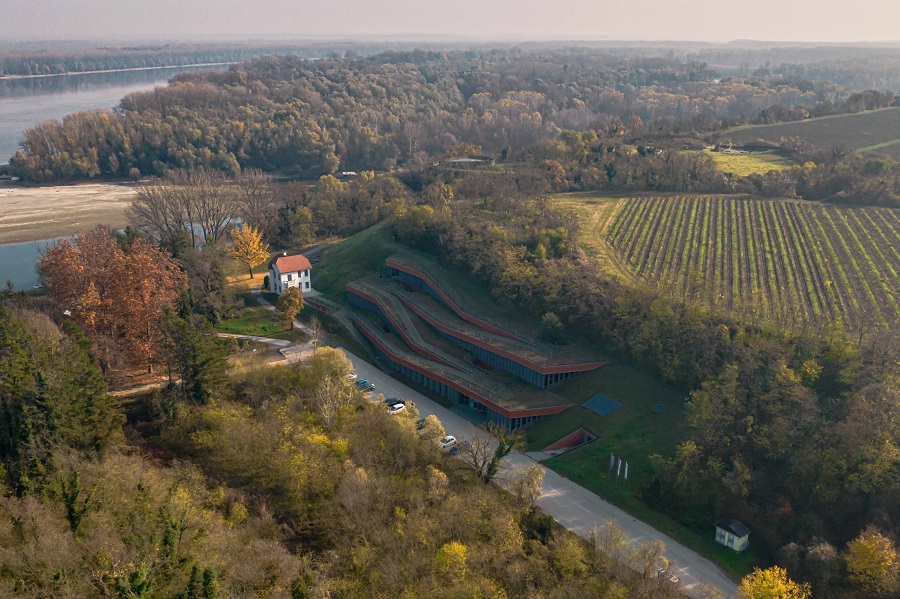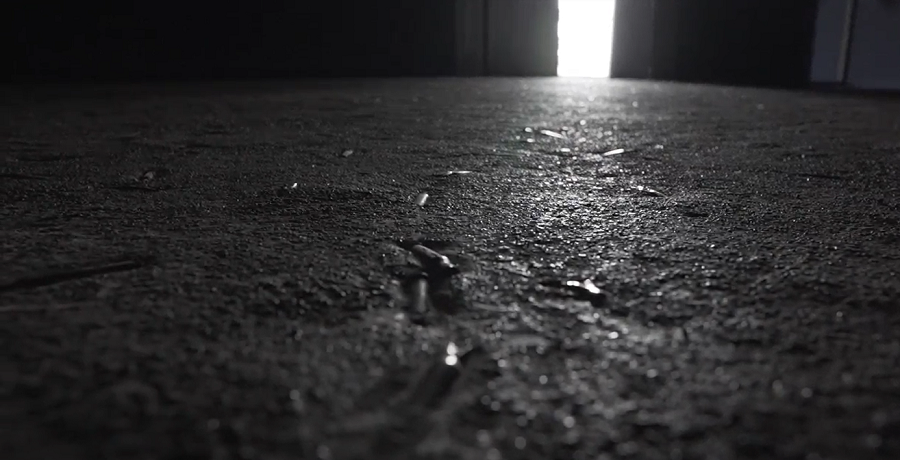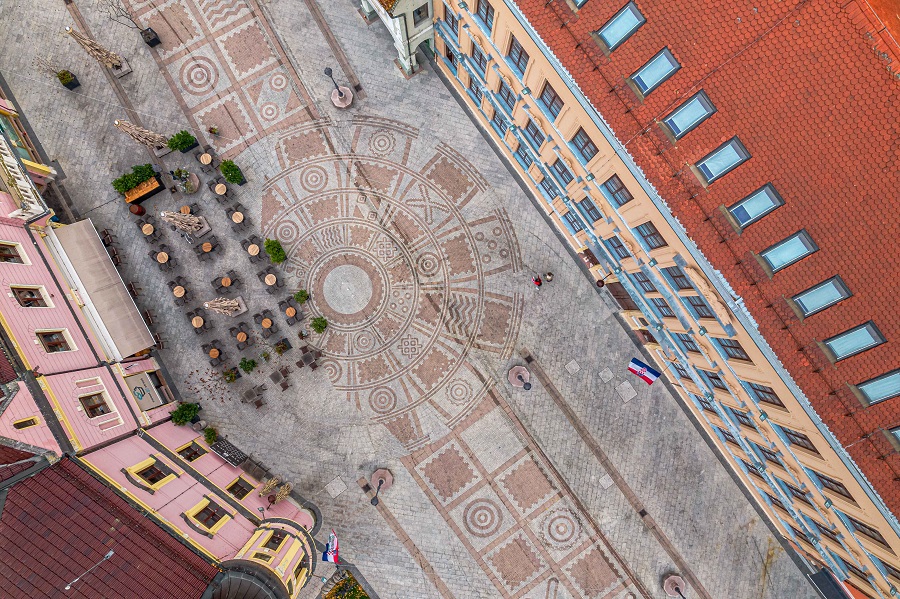Festive December Holidays Fun at 2021 Christmas in Ludbreg
December 02, 2021 – From winter walks and cycling to festive lights, farmers markets and the arrival of Saint Nicholas, there's a full calendar of activity and fun at Christmas in Ludbreg
Sitting just an hour's drive northeast of the Croatian capital, the town of Ludbreg is easily among one of the most appealing day trips you can take from Zagreb. And, no more true is that than in the December holiday season.
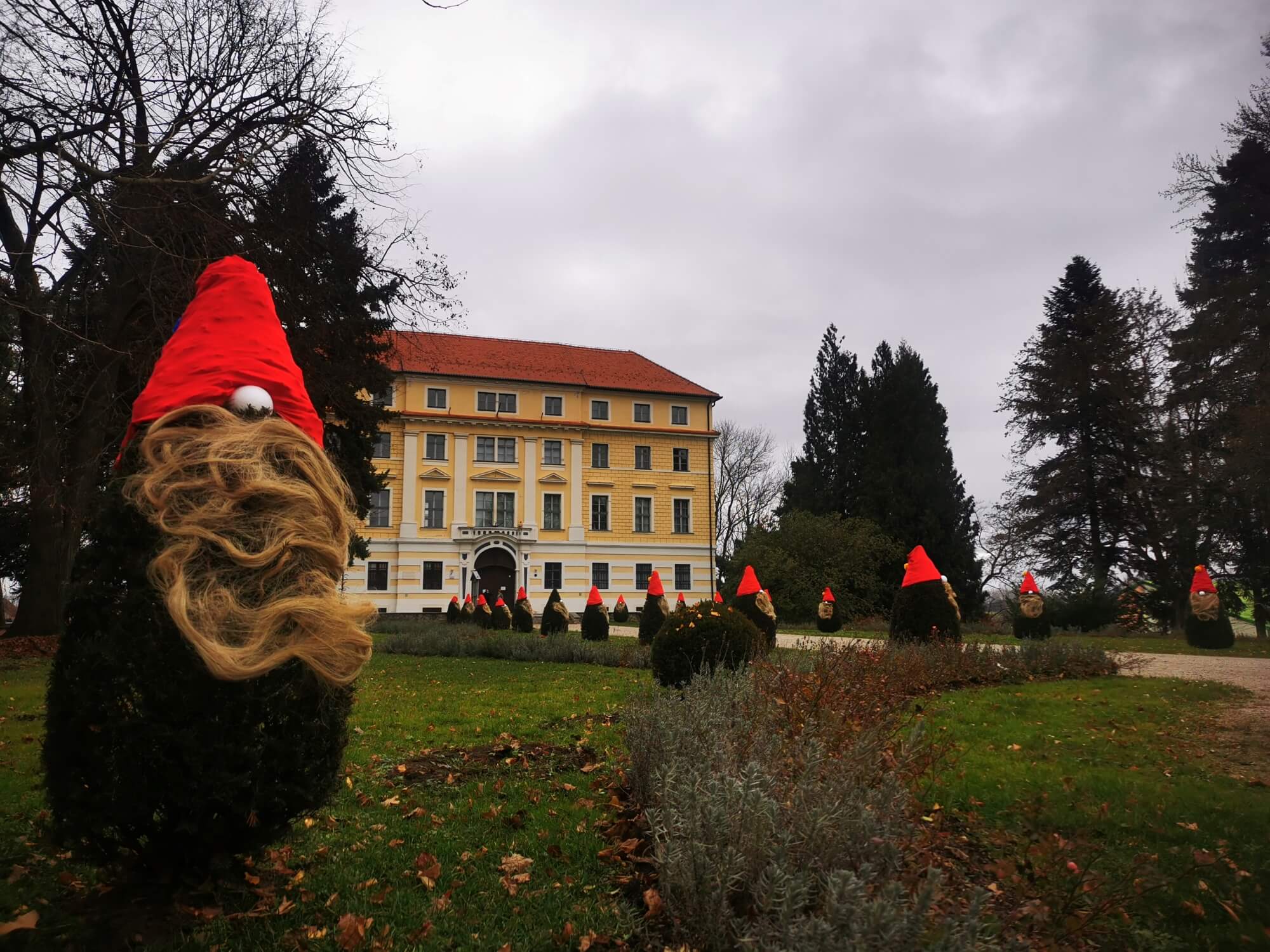 Batthyany castle, Ludbreg, December 2021 © Nikolina Breber
Batthyany castle, Ludbreg, December 2021 © Nikolina Breber
The fields and hills surrounding Ludbreg are today still home to traditional agriculture and winemaking. In the winter season, the families of these farms and vineyards bring the best produce to sell in town. Sparkling with Christmas lights and with seasonal music events adding to the atmosphere, Ludbreg is a great place to pick up a Christmas gift.
But, the nature surrounding the town is not only loved for its produce. Winter and Christmas in Ludbreg is a great time for active events and keeping fit. You can here challenge yourself on a cross country trek or bike race this season.
There are events at Christmas in Ludbreg for everyone. From the youngest family members and their teenage siblings to mom, dad and grandparents too. Here's a look at December's seasonal calendar for Christmas in Ludbreg.
St. Nicholas Day - 5 December - Ciklokros League Ludbreg
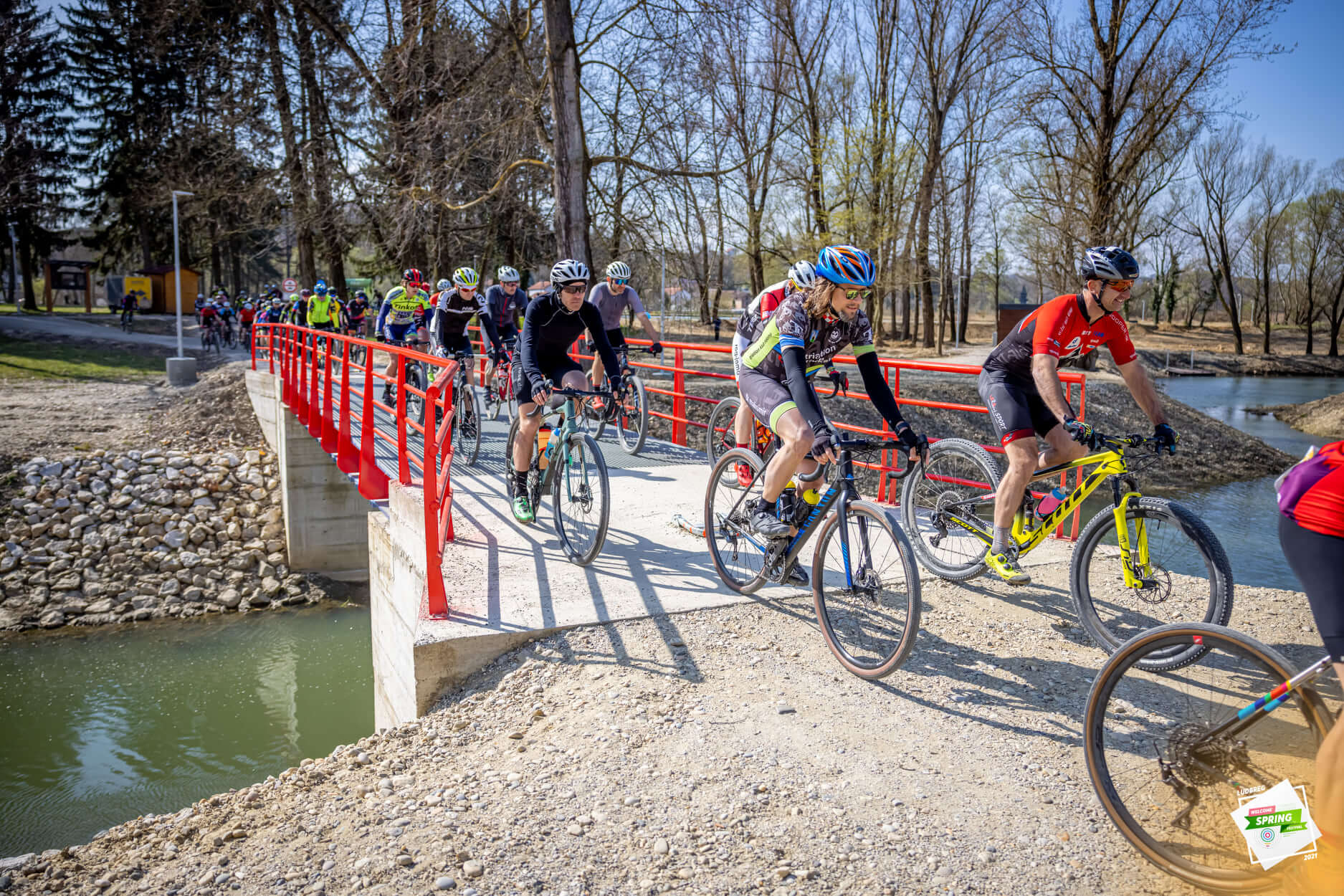 © Ciklokros
© Ciklokros
Following a successful tour in spring, the second round of 2021's Ciklokros League is here. This time, it's a series of seven Sunday races that journey through the stunning Autumn/Winter landscapes of northwest Croatia. And, on 5th December, it's the Ludbreg race.
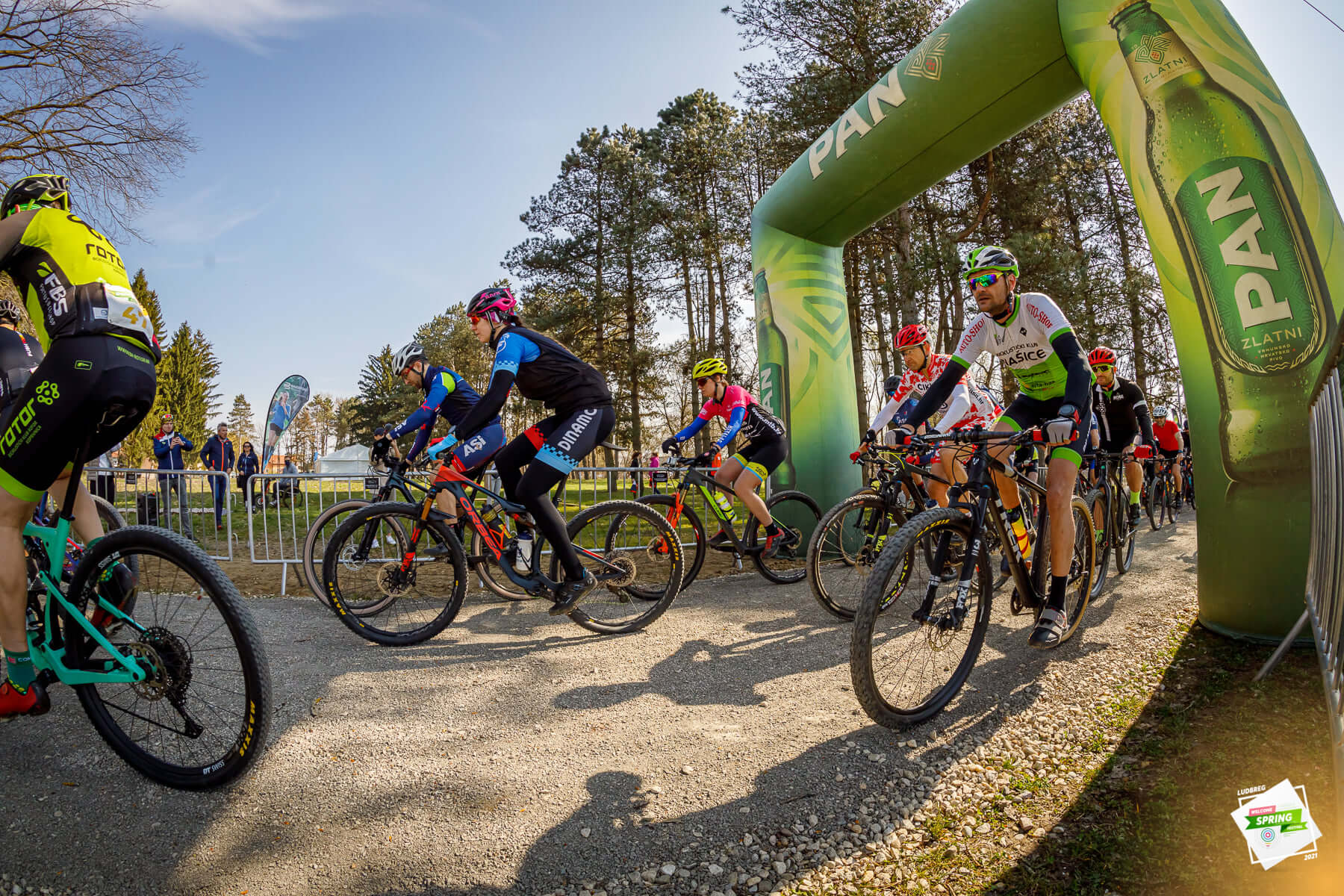 © Ciklokros
© Ciklokros
Cyclists will race successive laps of a 2000 metre course past the waters, lawns and trees of Ludbreg's Otok Mladosti. The fun trail is a mixture of dirt track, grass and course gravel path, unchallenging and perfect for any kind of bmx, mountain bike or cross country racer (more fragile, traditional road racing bikes perhaps wouldn't be so suitable and electric bikes are not permitted). Although keep an eye out – race organisers have placed some obstacles on the route for you to go around.
The event welcomes competitors all ages and abilities, with an initial race starting at 1pm and the second at 1.20pm. You can get more info here and apply to take part here, with the entry fee being just 50 kuna.
St. Nicholas Day - 6 December - Arrival of Saint Nicholas by Horse Drawn Carriage
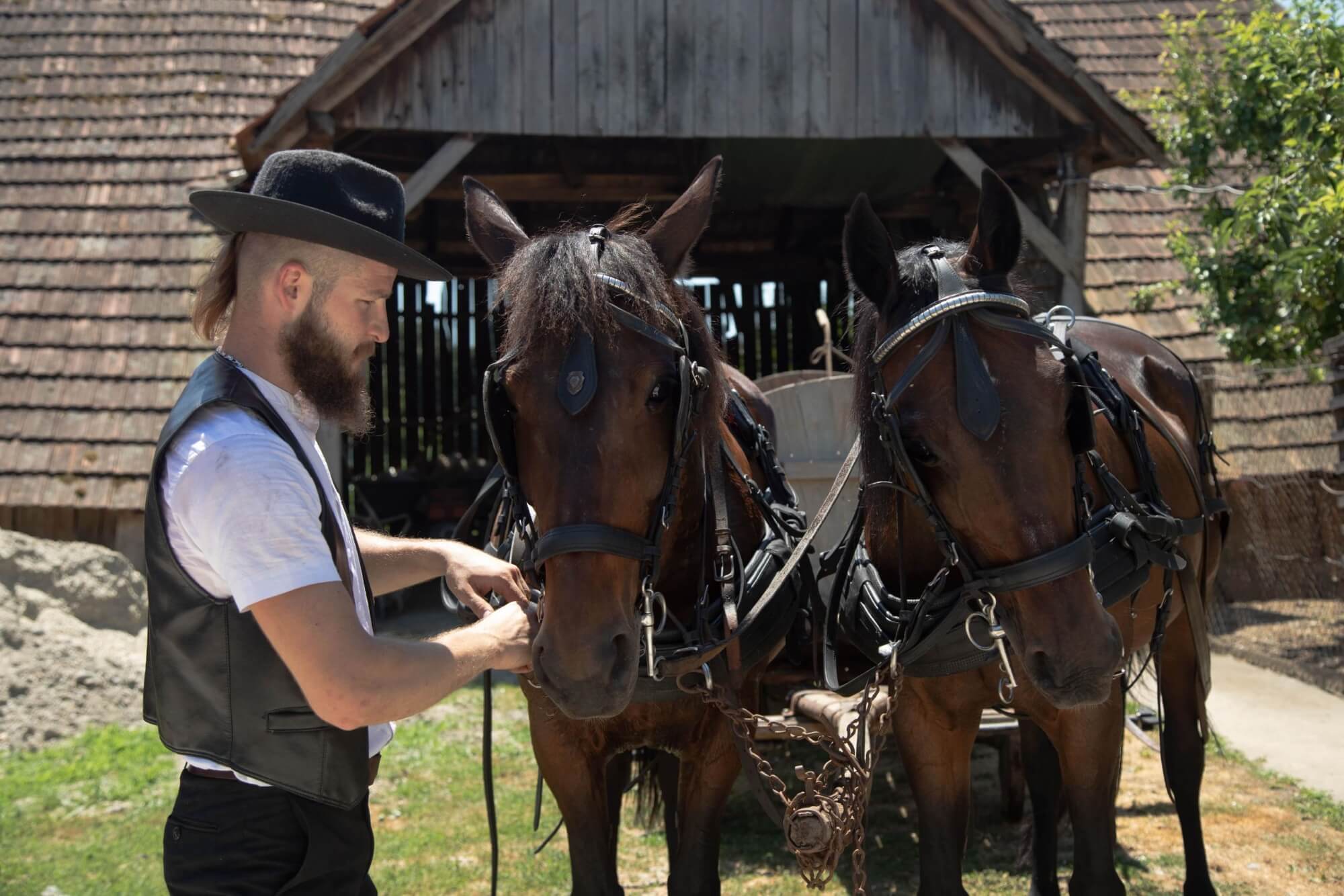 © Matea Maltarić
© Matea Maltarić
Many children have to wait until Christmas Eve for a visit from Santa Claus. But, not the youngsters of Ludbreg. In Croatia, the celebration of Saint Nicholas Day is still observed traditionally on December 5/6th. Often, it's a time of gift-giving. Always, it's a time loved by the young people of Ludbreg.
Of course, Santa usually arrives on a sleigh pulled by reindeer. But, there's simply no guarantee of the necessary snow so early in winter. So, in Ludbreg, Saint Nicholas arrives by horse-drawn carriage. Horses are a much-loved feature of sporting and social events in Ludbreg, with the town's summertime equestrian games now being a decade old.
 © Matea Maltarić
© Matea Maltarić
Because it's his day, Saint Nicholas gets the first ride with the horses. But, after he arrives to greet everyone, his carriage and horses will take youngsters for a ride around Ludbreg. Children and families can arrange horse riding or a tour in a horse-drawn carriage around Ludbreg throughout the year.
Ivana Galić concert at Batthyany castle - 17 December
 Batthyany castle, one of the venues for Christmas in Ludbreg © Siniša Sović
Batthyany castle, one of the venues for Christmas in Ludbreg © Siniša Sović
Despite her young years, singer Ivana Galić already has a performance career that stretches back some 20 years. She has appeared as part of choirs and ensembles and as a soloist at concerts across Europe. In her native Croatia, she is particularly well known for the vocals she lends to black music genres – jazz, soul and gospel. Indeed, she has performed in the UK as a guest of the renowned Birmingham Community Gospel Choir. It is to this gospel genre that Ivana Galić and her quartet return at this special Yuletide concert.
The venue for the concert is Batthyany castle. The focal point of Ludbreg Old Town, the castle today is a fully refurbished version of the opulent residence fashioned here in the 18th century (although, the original castle that stood on this spot is significantly older). What more spectacular setting could you ask for this special seasonal concert? The concert starts at 6pm.
Advent at Christmas in Ludbreg - 19 December
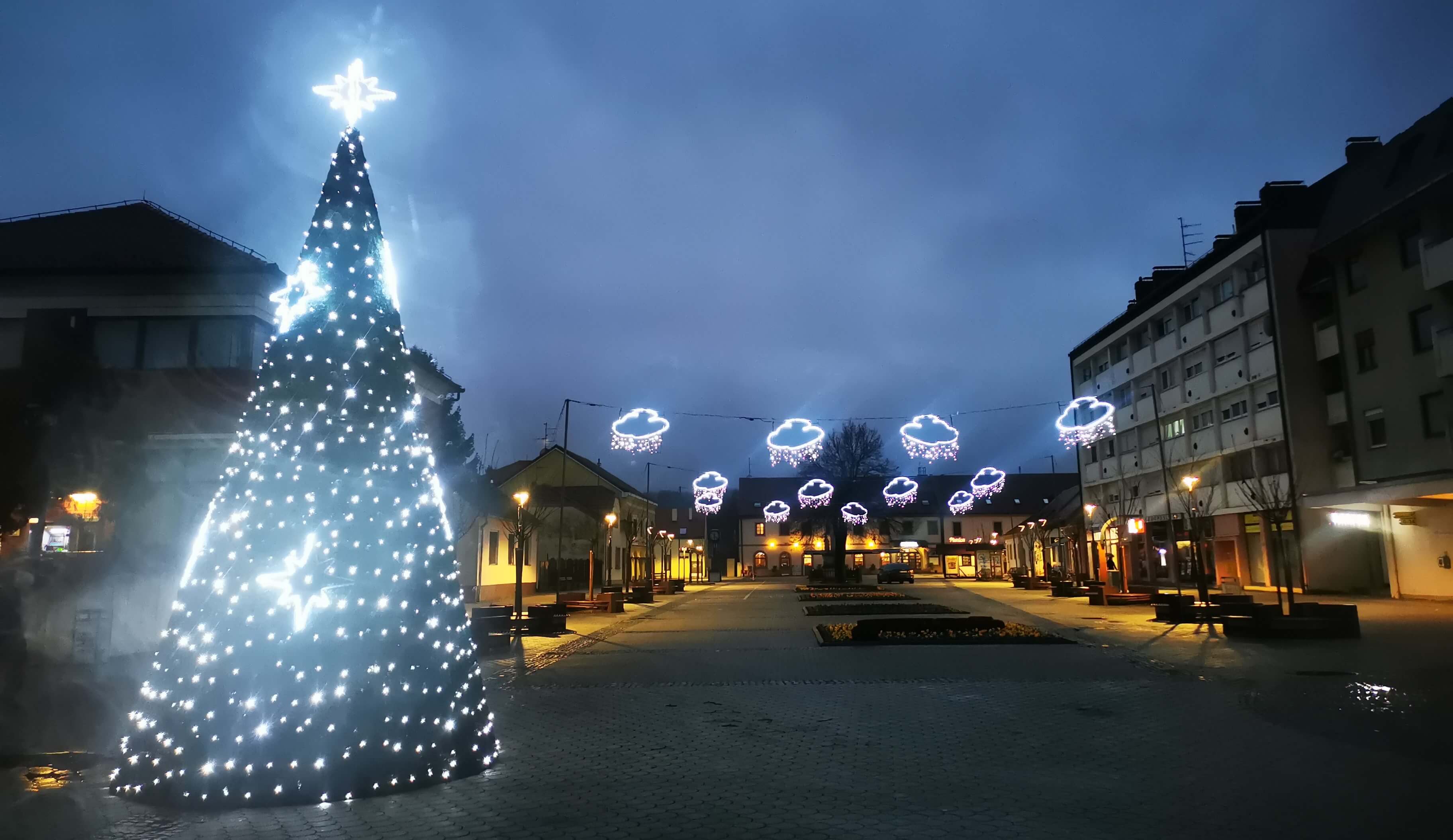 Christmas in Ludbreg 2021 © Nikolina Breber
Christmas in Ludbreg 2021 © Nikolina Breber
Ludbreg is a wonderful town to visit at any time of year. But, during Advent, Ludbreg is particularly quaint and romantic. The town is dressed in flickering, seasonal lights and nowhere is the seasonal spirit better felt than on the parade of huts and stalls of the Christmas market.
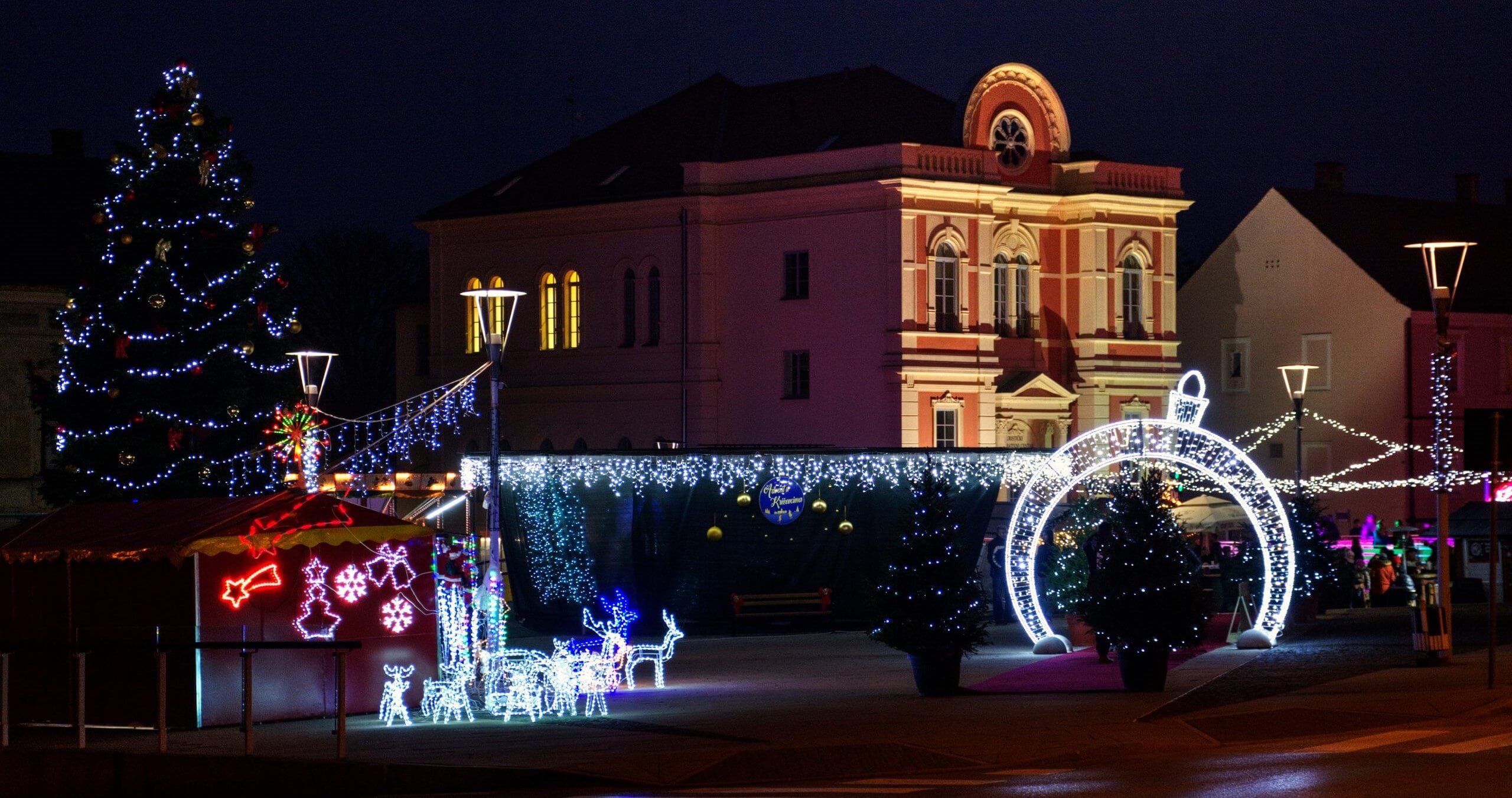 Christmas in Ludbreg © Visit Ludbreg
Christmas in Ludbreg © Visit Ludbreg
This year, scents and flavours of the Christmas season will waft through the Ludbreg air on Sunday 19 December. On the occasion, folks from the surrounding family farms will come to town to show off the best of their seasonal produce. Looking for some authentic, tasty or traditional gifts? This is the place to come.
The Christmas market will start at 13.00 and run until 20.00. In 2021, it takes place in the newly renovated Zanatski trg (Craft square) and on the promenade.
Crazy Hill Trekk 2021 - 19 December
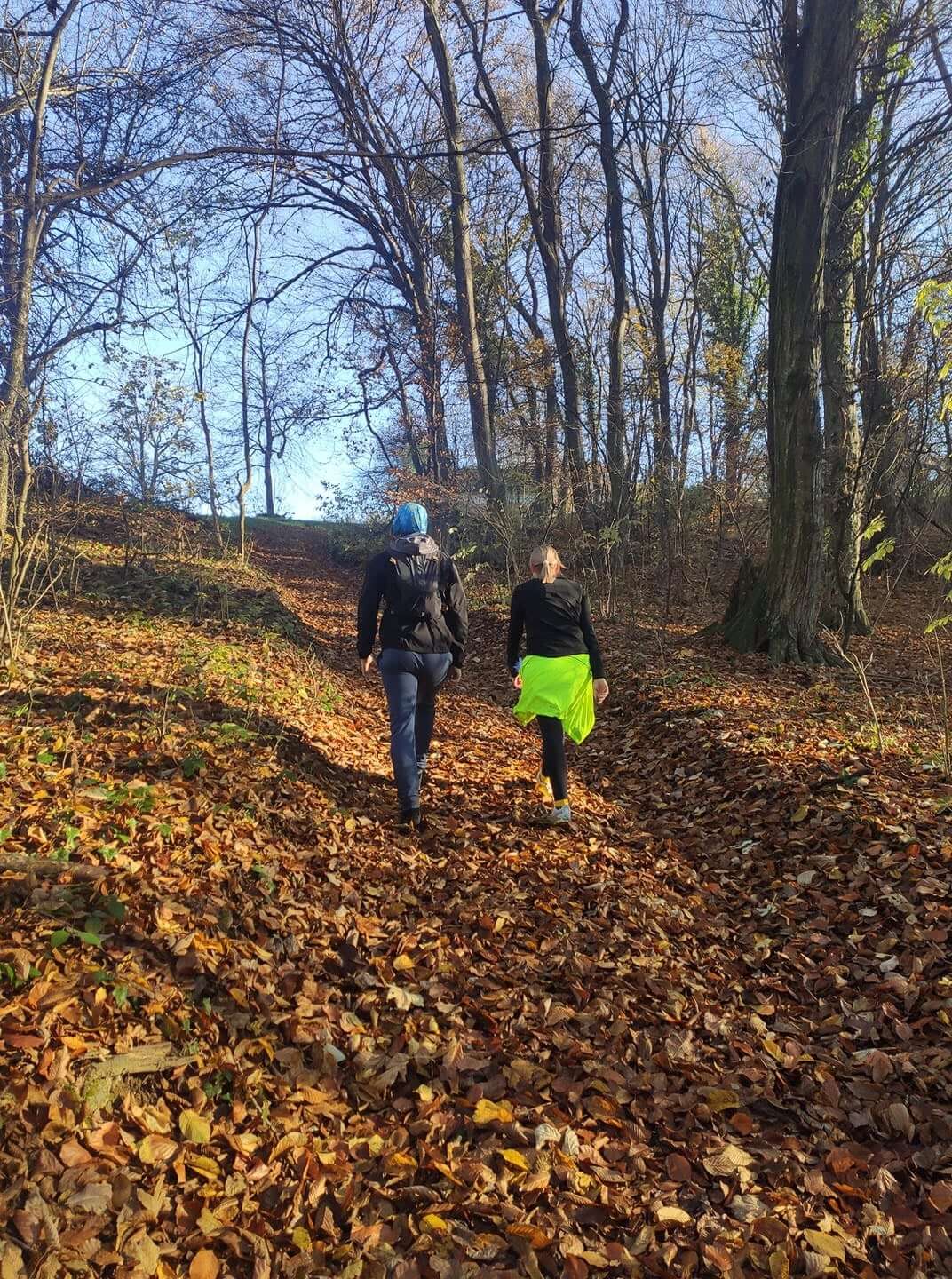 © ŠRD BSV Ludbreg
© ŠRD BSV Ludbreg
Some will wait until January before trying to shift the extra kilograms you gain eating rich Christmas food. Not in Ludbreg, where folks balance fine living with a healthy lifestyle. The cooler winter temperatures are perfect for a little exercise and exertion. That's exactly what you'll get at the second annual Crazy Hill Trekk.
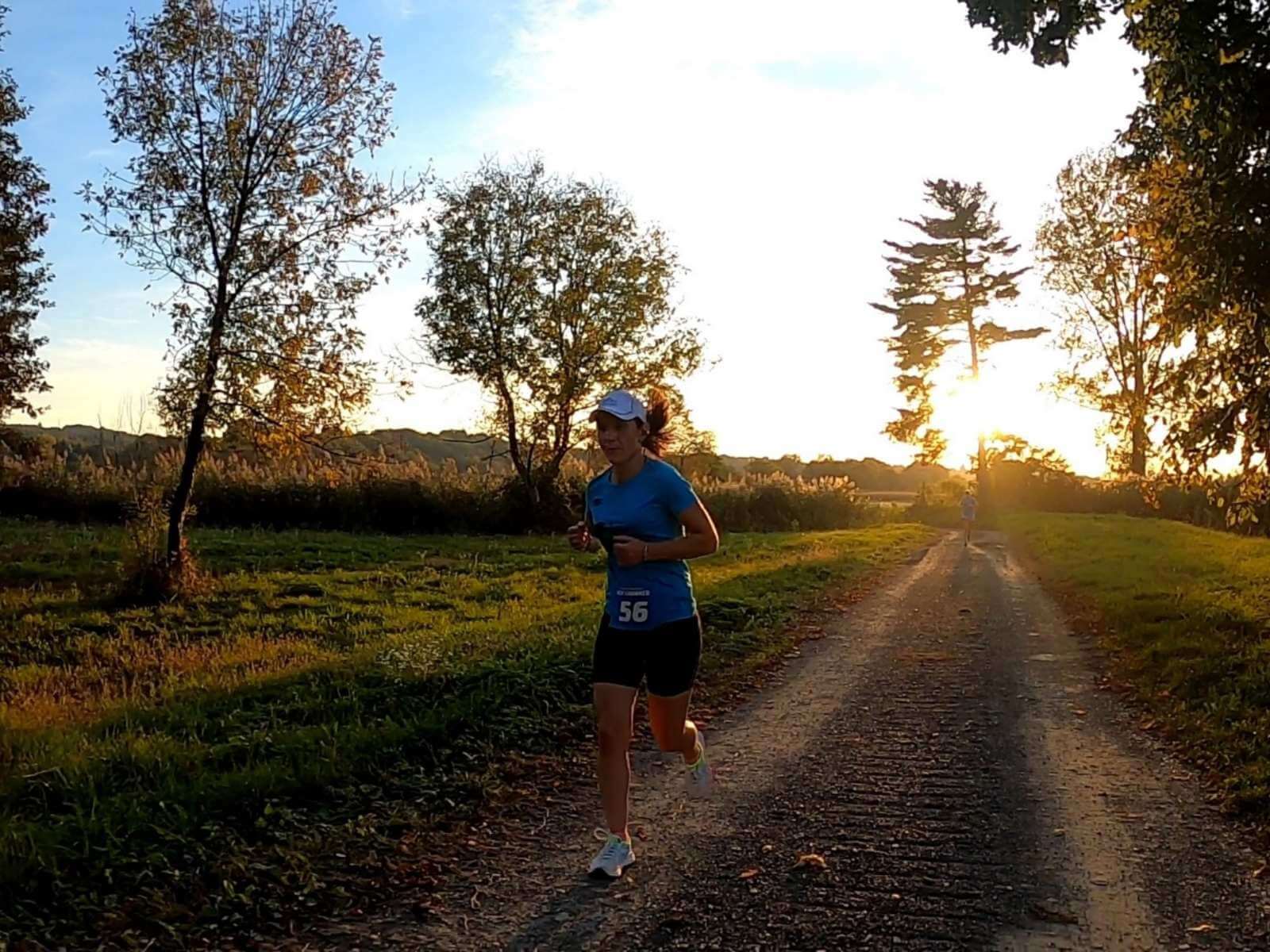 © ŠRD BSV Ludbreg
© ŠRD BSV Ludbreg
This orienteering trek race will take you through the magical hills and forests that lie on the outskirts of Ludbreg - Vinogradi Ludbreški and Kalničko gorje. As the name suggests, the terrain around Vinogradi Ludbreški is a pretty landscape filled with neat rows of grapevines. Just to the south of Ludbreg a more rugged topography begins to emerge. The peaks of the Kalnik mountains form a natural border between the historic Croatian regions of Zagorje, Prigorje and Podravina. To their west is Zagreb County, to the south and east is Koprivnica- Križevci County and to their north is Varaždin County and Ludbreg. This is an incredible setting for a wintertime expedition.
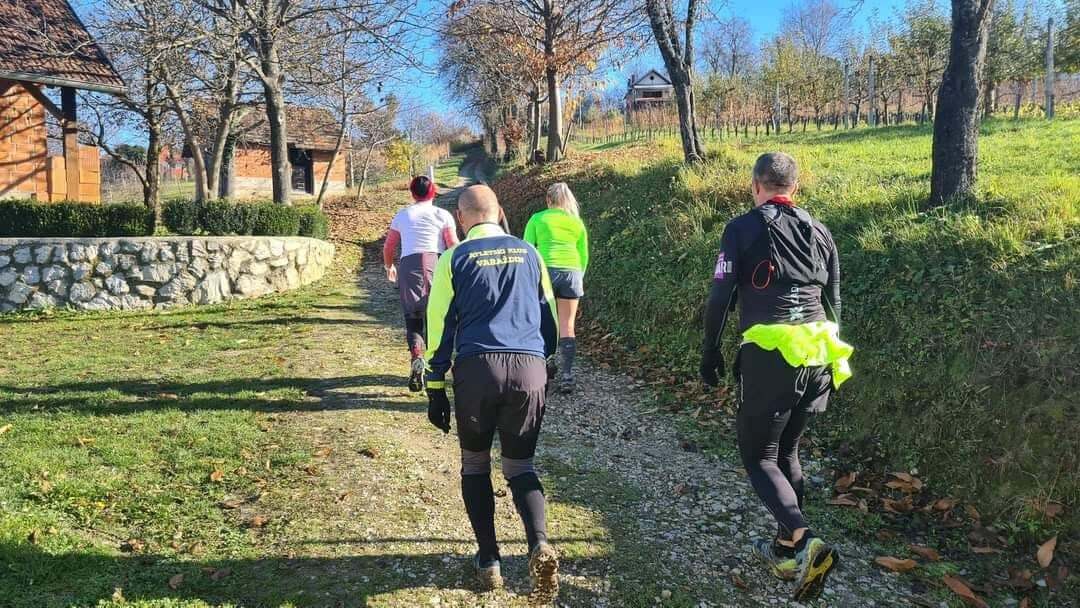 © ŠRD BSV Ludbreg
© ŠRD BSV Ludbreg
The trek welcomes entrants of all abilities and experience. For trekkers who are more prepared and more experienced, there's the 18-20km trail, with a slightly more demanding orientation aspect. For lighter runners and those simply looking for some fun recreation in a fantastic winter setting, there's a 8-10km trail. The former should take much less than the maximum 6 hours set as a time limit, with an equally generous 4 hours set for the latter.
You can find out more about the trek races and apply to enter via here.
From Cooking to Sending Wages Home, How Osijek Nepalese Residents Live
December the 2nd, 2021 - There are thousands of foreign workers from distant countries outside of both the EU and the rest of Europe living and working here in Croatia. Slavonia is home to many of them, and we're going to take a quick look at just how Osijek Nepalese residents living and working in that Eastern Croatian city live.
As RTL/Sib.hr writes, large numbers of Indians, Filipinos, Thais and many other foreigners are currently working in Croatia. In the City of Osijek, for example, is home to as many as 80 Nepalese nationals. Their homeland lies a distant 6000 kilometres from "Kruasija", as they call this country, but even without mountains and temples to speak of in flat Slavonia, Osijek Nepalese residents still somehow feel quite at home.
They manage to save part of their salaries and send it home, too, as is a common practice in such cultures where taking care of family is paramount. Croatian reporter Tin Kovacic found out all about how these Osijek Nepalese residents live, what they eat and just how they find life in the often overlooked Eastern part of the country.
If you type in Nepal on Google, you will see that you need to travel 6,000 kilometres (and a half) of the globe to arrive there from Slavonia. These 80 Nepalese nationals did just that, but in the opposite direction. They travelled half the world to get a job in an Osijek company that produces plastic packaging. They came legally through an agency and they pay for their health insurance, their pensions, all of their taxes and earn a living. This is what their work day looks like on the production line:
"I work here for about eight hours a day. It's not hard," Dilbach says.
They have a completely equal status with their 500 fellow Croatian nationals working here.
"They're very valuable workers. They want to help us. They're good work colleagues," says Aleksandra Peric, who is from Osijek.
After work, they like to walk around the city, which is where Tin got better acquainted with these Osijek Nepalese residents, who switched their climate for a home along the Drava. Osijek and Croatia have not been unknown places to them for the past three years.
Sunil Bam says:
"My friends have been to Croatia before. We talked about it and corresponded. They told me that Croatia is a good country. If you want to come here, Croatia is the best place."
In that Asian country, they are mainly engaged in agriculture, and Nepal continues to be one of globe's poorest countries. The average salary there is around 1,300 kuna per month, and here they have all of their accommodation and food paid for, and they earn around 5,500 kuna each month. A handsome increase.
"Oh yeah, we get more money here than we would back home. And every month when we get paid, we send a portion of it back home to our families," Bam says. For some, the plan is to earn enough and return to Nepal, and for some, to bring their family here and stay and live and work in Croatia permanently, as it seems the Slavonian temperament suits them best.
"Yes, I love the people here. They're very friendly and polite," says Manoj Achary.
Slavonian food is not foreign to them either, he adds, although they still like to cook their own traditional chicken and rice. The Bam confirmed that all food and accommodation is provided by their employer, but despite that, they still love to cook their own Nepalese dishes that they know so well. They have, however, tried some Slavonian food, comically describing ''something that looks like sausage.''
These Osijek Nepalese residents also know how to make a good lunch, according to Achary:
"We come into town and we drink your beer. Then we go to the Drava river, then we head back home,'' said Achary, who said he has grown to like local beer a lot. They naturally have the most problems with the notoriously difficult Croatin language, but they are attending Croatian classes and have mastered the basics. In order to get along as well as possible, they founded the Association of Friends of Nepal. The City of Osijek is also helping them out, organising various gatherings through the local plan for the integration of migrants, and even though they prefer volleyball and cricket, they've visited the Osijek Football Club.
For more, make sure to check out our lifestyle section.
Croatian Galeb Company Impresses NATO for Second Time
December the 2nd, 2021 - The Croatian Galeb company has impressed no less than NATO for the second time around. They're now on their very own export offensive of sorts.
As Poslovni Dnevnik/Suzana Varosanec writes, the business of the Omis-based Galeb, since 1951, when several hundred workers worked with the machines of the time boiling and intertwining the first cotton threads, all the way to today's company with more than 340 workers, a common denominator has remained present - success.
The Croatian Galeb company is interesting as it is currently the only vertically integrated manufacturer of knitted products in all of Croatia, it's also a strong, large enterprise and exporter with a prominent position and results in the Croatian textile industry. It also stands out because of its strategic focus on development and innovation.
In addition to all of the above, despite the strengthening of competition for imported products, the Croatian Galeb company has successfully maintained the entire production process and distribution in Croatia, through its own retail and wholesale network in Croatia, Slovenia and Bosnia and Herzegovina.
In addition, they're in a new development phase with the aim of rejuvenating their well known brand, in order to increase the share of customers from the young population while retaining their existing loyal customers. That includes, they say, their so-called ''export offensive''. The business of this important component of the Tekstilpromet Group is managed by director Josip Aracic.
''Our complete production process "from the yarn to the finished products" takes place in Omis - the production of knitwear, chemical finishing, design, tailoring, sewing and packaging, and with more than 340 employees, today we're the only vertically integrated manufacturer of knitted products in Croatia, which continuously invests in the latest technological breakthroughs. This occurs in all phases of textile production, as well as in the expertise and knowledge of our employees, whose craft and skill we're proud of,'' said Aracic, adding that all of Galeb's products have been tested with a very precise method and they have the Oeko-Tex 100 certificate to their name, too.
This is confirmed once a year through testing at a German licensed institute. Thus, for their 100 percent ''healthy'' products, in the year in which they celebrate their 70th birthday, in the midst of a global pandemic, they have concluded new, extremely significant deals. They are especially looking forward to the new job they just got for NATO.
This is otherwise the Croatian Galeb company's second contract for the delivery of goods to NATO, which is obviously an additional indicator of their quality and competitiveness.
"We believe that getting a new job for NATO is a great reference that will be used in Galeb's business. It's a demanding procedure with a number of specifics, among other things because it isn't known for whom exactly the items are being procured and that a very large number of bidders were invited to compete with their bids, so we got the job amid strong international competition,'' said Aracic of the deal.
The new job for NATO in the segment is functional underwear, within the framework of a signed three-year contract with the possibility of an extension. This definitely sets the Omis company apart from the rest of the textile industry as it is the only one that has managed to meet NATO's incredibly high tender standards twice during Croatian independence.
With many years of experience and cooperation in equipping the military industry in the Republic of Croatia and abroad under their belts, they have achieved exceptional business references and, according to Aracic, they're very much ready for new challenges and further growth with constant innovation.
For more, check out Made in Croatia.
Electrocoin and Konzum Cryptocurrency Shopping to be Permitted
December the 2nd, 2021 - Electrocoin and Konzum are the main players in the currently largest cooperation in the domestic cryptocurrency market - after implementing the service for several months and then testing it out for a couple of weeks, Konzum cryptocurrency shopping/payment is now permitted.
As Poslovni Dnevnik/Lucija Spiljak writes, in the near future, services will be available in Konzum stores; for a start in 60 of them where they have self-serving cash registers, and soon after in all 630 small, medium and large stores throughout the Republic of Croatia.
Noticing the growing interest in the use of cryptocurrencies in the world, including right here in Croatia, the largest domestic retail chain, Konzum, decided to turn more strongly to the younger population that has more or less totally embraced the cryptoworld, all in cooperation with Electrocoin, one of the fastest growing Croatian cryptocurrency brokerage companies.
"This is definitely a step into something new for Konzum and for the retail market in Croatia. We're offering our customers some new opportunities and technologies. Konzum has proven its leading position in the market so many times when it comes to technological innovations, and we are, as with the introduction of Google Pay and Apple Pay, happy to have a new opportunity to improve the shopping experience in line with the latest trends. These investments are in line with the process of digital transformation of the Fortenova Group, including Konzum as its largest member,'' stated Uros Kalinic, a member of the Management Board of Konzum who is in charge of finance and informatics.
The collaboration to make Konzum cryptocurrency payment possible began one year ago when Electrocoin experts brought Konzum's team closer to the crypto market here in Croatia and showcased the affinity of domestic consumers for it.
"As this isn't the first time that we've introduced new opportunities, our team is already in tune with it. The field of informatics, led by director Jozo Dzakul and director of the business applications sector Ines Barbir, is always up to the task, so this time too there were no surprises during the project. We applied an agile methodology for the project, it lasted a couple of months, several Konzum systems were included in the project, and Konzum Informatics, mStart, the team from Eletrocoin and other partners were all included. The testing itself lasted a couple of weeks and several teams participated in it, a total of about 20 people,'' said Kalinic.
In this pre-Christmas period, the weight of what's in the average shopping trolley increases, so this period is a great opportunity for customers to try out this method of payment. Kalinic pointed that out that he is happy that they can conclude a challenging year with such an innovation.
"Just like back in 2002 when we recognised the value of the market for buying groceries over the Internet, now we're looking forward yet again and recognising the trends that are yet to come. Payment with cryptocurrencies is certainly still in its infancy here in Croatia, but the experience of our partner Electrocoin justifies this investment. Just as our customers use banking applications for electronic payments, we believe that this service will get its share as far as transactions go as well. From year to year we see a decrease in the share of cash transactions, which is logical in the age of digitalisation and coronavirus, when cash payments have been discouraged for epidemiological reasons.
This is a new option for some of our customers who are more technologically advanced, but also own cryptocurrencies. When we talk about the industry, I expect that some other chains will follow us in this step forward and that they'll also recognise the potential in this new market segment. During the test period, we tried to anticipate possible obstacles that might await us. Of course, we're ready for surprises and quick reaction in case of the need for some adjustments or corrections in the system,'' added Kalinic.
Thanks, among other things, to Electrocoin, the Republuc of Croatia is growing in parallel with the rest of the world in the fast-growing cryptocurrency market. In February this year, they launched a kind of revolution in Croatia by announcing cooperation with Tifon, at whose fuel stations throughout Croatia people can pay for fuel in cryptocurrencies.
This cooperation made them accessible throughout Croatia, but also helped their visibility, which gave Electrocoin additional impetus, given that many new customers contacted them after the news of their cooperation with Tifon.
“Traffic is growing; last month, with 8.8 million kuna, we almost reached the ''mythical'' 10 million kuna mark, which two years ago looked like a figure from the imagination, but this cooperation helped us attract both traders and buyers,'' pointed out the head of Electrocoin, Nikola Skoric, who, back in February, announced several projects with some big players. He believes that their cooperation with Konzum and the ability to make Konzum cryptocurrency purchases will further increase the company's turnover and enable them greater visibility, but this time - at the European level.
For more, check our dedicated lifestyle section.
Impressive Croatian Earthquake Resistant Data Centre Located in Zagreb
December the 2nd, 2021 - The 2020 earthquakes still remain in the backs of the minds of all of us who were unfortunate enough to experience them, and the need to further secure buildings against these natural disasters has been in the forefront. The Croatian earthquake resistant data centre in Zagreb is impressive.
As Poslovni Dnevnik/Lucija Spiljak writes, after a year of work, A1 Croatia has opened the most modern data centre in not only Croatia but in the entire immediate region. This Croatian earthquake resistant data centre is located the intersection of Veceslav Holjevac Avenue and Neziceva street in the heart of the City of Zagreb.
It is a centre worth a massive eleven million euros, it covers 2122 square metres of space and 220 tonnes of reinforcement and 5500 tonnes of concrete was used in its construction. It is the only one of its kind in Croatia built according to the Tier III criteria of the UpTime Institute, a world leader in the standardisation of digital infrastructure performance, and it can withstand earthquakes up to magnitude nine on the Richter scale.
A kind of data bank has its own substation that is powered by two independent energy branches. If there is a power outage in the whole of Zagreb, the equipment will be powered by two diesel generators with a total power of 2MW and UPS systems.
At full capacity, this Croatian earthquake resistant data centre will have 300 IT cabinets in six technical rooms to meet the criteria of data security and technical protection. Among the first users of the centre is Generali osiguranje, part of the Generali Group - one of the world's leading providers of insurance and asset management services.
"When the earthquake happened, a lot of people realised that the data on which their business depends can easily be placed in danger,'' said Antonia Kujundzic Velimirovic, the director of network management and IT services at A1 Croatia, indicating that this brand new centre will be of enormous importance to those who have had their interest in data security heightened after the devastating natural events of last year.
For more, make sure to check out our dedicated lifestyle section.
Bagatin VISIA Analysis: An Eye-Opening Experience for Your Skin
December 2, 2021 - A deeper look into the Bagatin VISIA Analysis and why it was exactly what my skin needed.
Something about being in your early 30s awakens a wellness side of you that didn't quite exist before. At least not during your far-more careless 20s.
Your age also becomes slightly more visible after you enter this new decade, with lines forming in places you once believed your skin would never see. I now understand why my godfather begged me to stop being so animated with my face when I was 10 - "because those lines will stay." I should have listened.
But laugh lines don't worry me that much anymore. Sure, they're more prevalent at 31 than at 28, but they also add character (so I kid myself).
However, I was more interested in seeing what kind of shape my skin was in, given a long history of issues, from acne in my teens to early 20s to learning I had rosacea at 25. It had been too long since I had visited a dermatologist, so before booking a treatment that would set me back 100 euros and may or may not be suitable for my skin, I decided to visit the best and dig deep into all of my skin's layers with the Bagatin VISIA Analysis.
Located in the Dioklecijan Hotel & Residence building, Bagatin Polyclinic confirmed its status as the best dermatological clinic in Europe in 2018 by opening a Split location in January 2019, guaranteeing the best possible approach, staff expertise, and state-of-the-art technological equipment for all skin changes, but also in erasing signs of aging. This new clinic brings Croatia's best wellness sanctuary to Splićani without having to trek to Zagreb. And I am so happy they're just a 10-minute walk from my house.
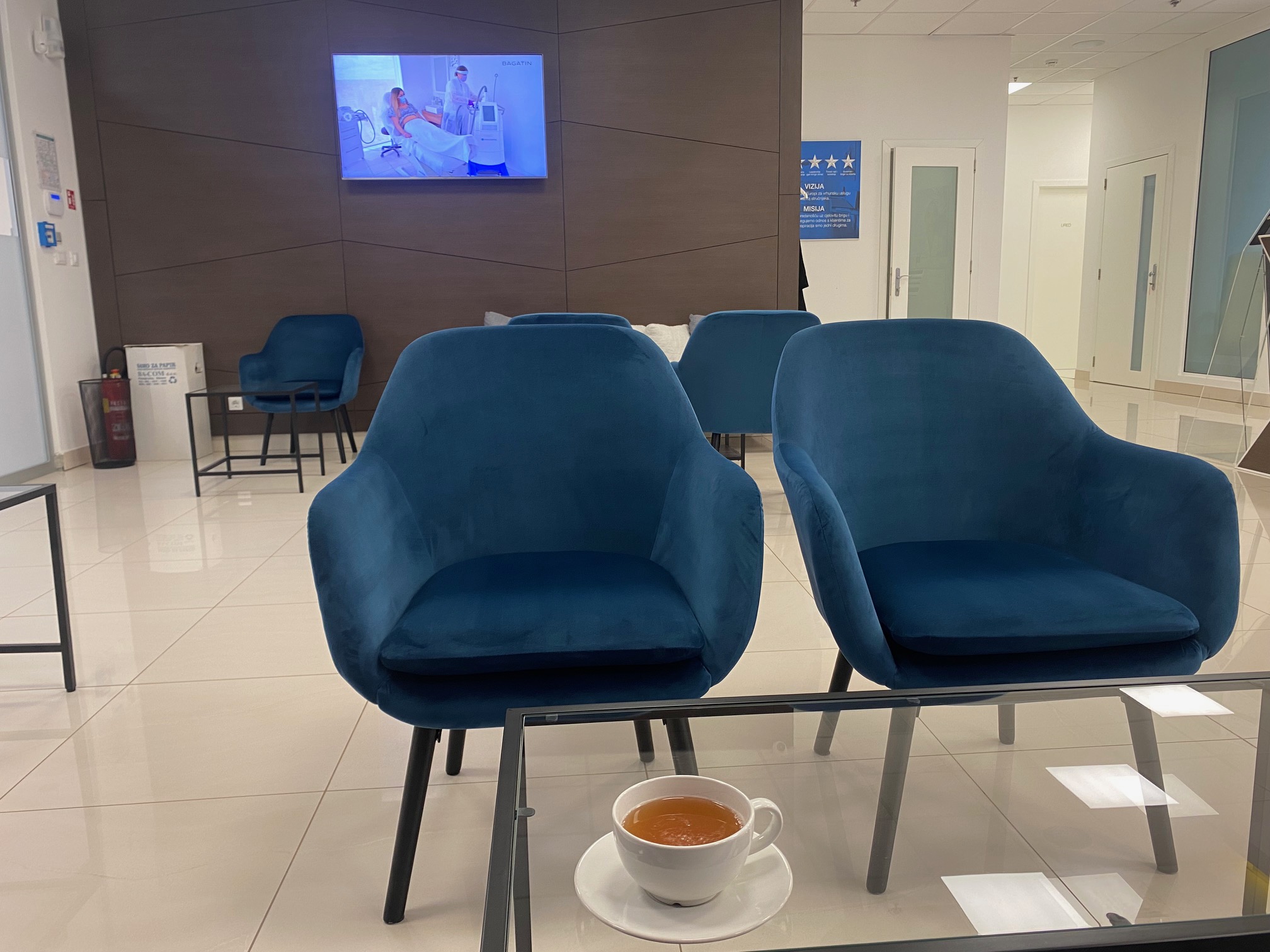
So, what is this Bagatin VISIA Analysis anyway?
At Polyclinic Bagatin, we provide our clients individual consultation and analysis with the help of the advanced digital skin analysis system VISIA. This scientific approach uses a perfected imaging system combined with direct consultations with one of our medical experts. The VISIA skin analysis system's results help create a framework for any treatment programme, adjusted for each client.
Knowing your unique skin profile is the first step towards complexion health and vitality. VISIA can determine the state of your skin, both on the surface and underneath it. The multispectral image and analysis from the VISIA system give a clear, multidimensional insight into the individual aspects of your complexion, which affects your overall look and serves as a guide in a personalized skin treatment programme.
Namely, the VISIA system uses multispectral imaging and analysis to look deeper into six areas - wrinkles, spots, pores, complexion evenness (variations of complexion color), porphyrins (presence of bacteria in pores), and UV spots (photodamage characteristics and typical for excess exposure to sun).
VISIA also gives a thorough analysis of your complexion compared to other women in their database containing thousands of profiles. The analysis itself takes a few minutes, as the machine takes photos of the left, front, and right sides of your face. The Bagatin specialists then suggest the best treatments and skincare regimens right for you.
I met with Daniela (yes, we share the same, which made the experience all the more fun) for my analysis, who shared an incredible amount of expertise into skin issues, especially about issues I thought had passed. For example, learning that my true skin age was essentially right on target (phew) but that my poor skin is extremely dehydrated due to various conditions (rosacea, broken capillaries, and inflammation, all of which should be treated soon) was incredibly eye-opening. Learning that most of these fine lines will likely vanish after taking the proper care was also an enormous relief.
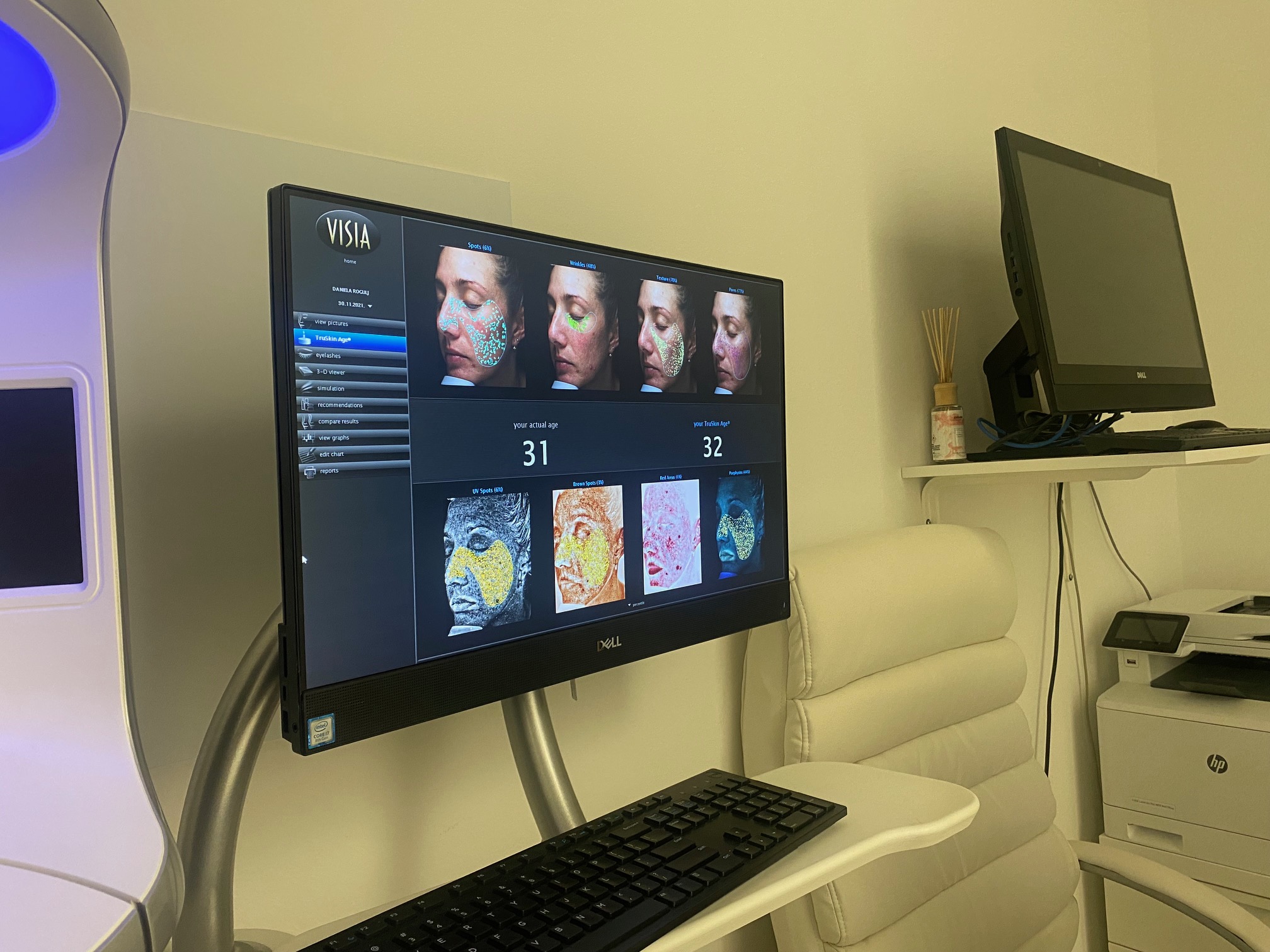
I spent over 30 minutes with Daniela, who explained each intricate detail, from natural tips to treat problem areas and products I should stop using now based on my skin type. She even advised against using cotton pads or makeup remover wipes as they can be too abrasive for my sensitive skin.
The overall experience, while humbling, was perhaps the biggest surprise I've had in my 30s so far - in a good way. Daniela created a treatment plan she thinks would help my skin issues, with pricing explained and products to follow ONLY IF my skin takes to them during the treatment.
Daniela's patience and non-pushy attitude made me want to book my next appointment ASAP, though it's probably best I wait until the holiday season ends to get the best results.
Bagatin, you've certainly earned your status as the best dermatological clinic in Europe.
You can read more about the Bagatin VISIA Analysis HERE and their other services on their website.
To read more about lifestyle in Croatia, follow TCN's dedicated page.
Croatia and Serbia to Meet in Davis Cup Semifinals on Friday
December 2, 2021 - The Croatian men's tennis team will play against Serbia in the Davis Cup semifinals in Madrid on Friday. Serbia defeated Kazakhstan 2-1 in the quarterfinals on Wednesday, although they lost the first match.
The first point for Kazakhstan was secured by Mikhail Kukushkin, who after three hours and 18 minutes of play defeated Miomir Kecmanovic 7:6 (5), 4:6, 7:6 (11).
Kukushkin was in a good position when he won the first set and led 4:2 in the second, but Kecmanovic's series of seven games followed, which gave him a 3-0 advantage in the decisive third set. The Serbian tennis player had two consecutive match points at 5:3, but Kukushkin managed to break and took the game to a tie-break in the third set.
In that decisive game, Kecmanovic was the first to reach the advantage, had two more match points, one at 6:5, the other at 7:6, but even then he did not finish the match. Kukushkin reached his first match point with two consecutive points at 8:7, but the Kazakh also missed four. However, he managed to get the 5th match point in his 12:11 lead on Kecmanovic's serve.
In the second singles match, world #1 Novak Djokovic defeated Aleksandar Bublik 6:3, 6:4, bringing Serbia equal. An hour and 16 minutes of play were enough for Djokovic to win against Bublik, more than two hours less than it took Mikhail Kukushkin to bring Kazakhstan to the lead with a victory against Miomir Kecmanovic.
The winner was then decided by the doubles match, in which Djokovic and Nikola Cacic defeated Andrej Golubjev and Aleksandar Nedovjecov 6:2, 2:6, 6:3 after an hour and 37 minutes of play, bringing Serbia the semifinal match against Croatia, which is scheduled for Friday.
Recall, Croatia defeated Italy 2-1 in the quarterfinals in Turin on Monday.
Germany also reached the semifinals with a 2-1 victory against Great Britain on Tuesday, and Russia and Sweden will play in the last quarterfinal match on Thursday. The semi-final match between Germany and the better of the Russia-Sweden match will be played on Saturday.
To read more about sport in Croatia, follow TCN’s dedicated page.
Damir Krznar Sacked as Dinamo Coach After Croatian Cup Elimination
December 2, 2021 - After Rijeka won in the Croatian Cup quarterfinal on Wednesday, the coach of the Croatian champion Dinamo, Damir Krznar, has resigned.
Krznar took over Dinamo in mid-March this year after being assistant to former coach Zoran Mamić. Recall, Mamić had to leave the Dinamo bench due to a final conviction. Krznar led the team in a 3:0 victory against Tottenham in the Europa League round of 16, reported HRT.
Dinamo has been in a crisis and lost 1:3 to Rijeka under Krznar's leadership in the Croatian Cup on Wednesday.
Dinamo on Sunday expects the eternal derby against Hajduk in the 18th round of the First HNL and in eight days a visit to West Ham United in the last, 6th round of Europa League.
Krznar took responsibility in a statement after the relegation in the Cup,
"The fact that the result was not obtained, that the result was not delivered, both in the Cup and in the championship - we are limping. We have an extremely tough game against Hajduk; we enter it shaken. My moral act is to do everything for the team. Dinamo has always been in the first place. It is the team that comes first. I assess that at this moment, the team needs a positive shock. Maybe it is a good opportunity, as I address our fans, to thank them for their support, those who gave their support, and to apologize to those who did not have enough and who are dissatisfied with the reason. Right now, I may still be a little hot, but I don't think the situation will change tomorrow either. I am resigning from this position for the team to make one positive step, one mental shock, which is needed. I wish luck to the new coach; I wish luck to Dinamo," said Krznar.
Who will lead Dinamo in their next two key games will be known today after an 11 am press conference.
Željko Kopić, the head of Dinamo's football school and the most experienced of the remaining experts employed in Maksimir, should lead the team in the derby on Sunday. But, depending on that outcome, he may end the winter season on the bench.
Dinamo's management is expected to appoint a new head coach during the winter break, but more will be known after today's conference.
To read more about sport in Croatia, follow TCN’s dedicated page.
Happy Birthday Osijek: Time to Tell the Truth about Slavonia Full of Life
December 2, 2021 - Happy Birthday to Osijek! Enough of Zagreb ignoring eastern Croatia, it is time to tell the world the truth about Slavonia Full of Life.
One of the many paradoxes of this wonderful country - for me at least - is the relationship Zagreb and the rest of the country has with Slavonia and eastern Croatia (for ease of reading purposes, I will use Slavonia to refer to Osijek - Baranja, and Vukovar - Srijem counties in this article).
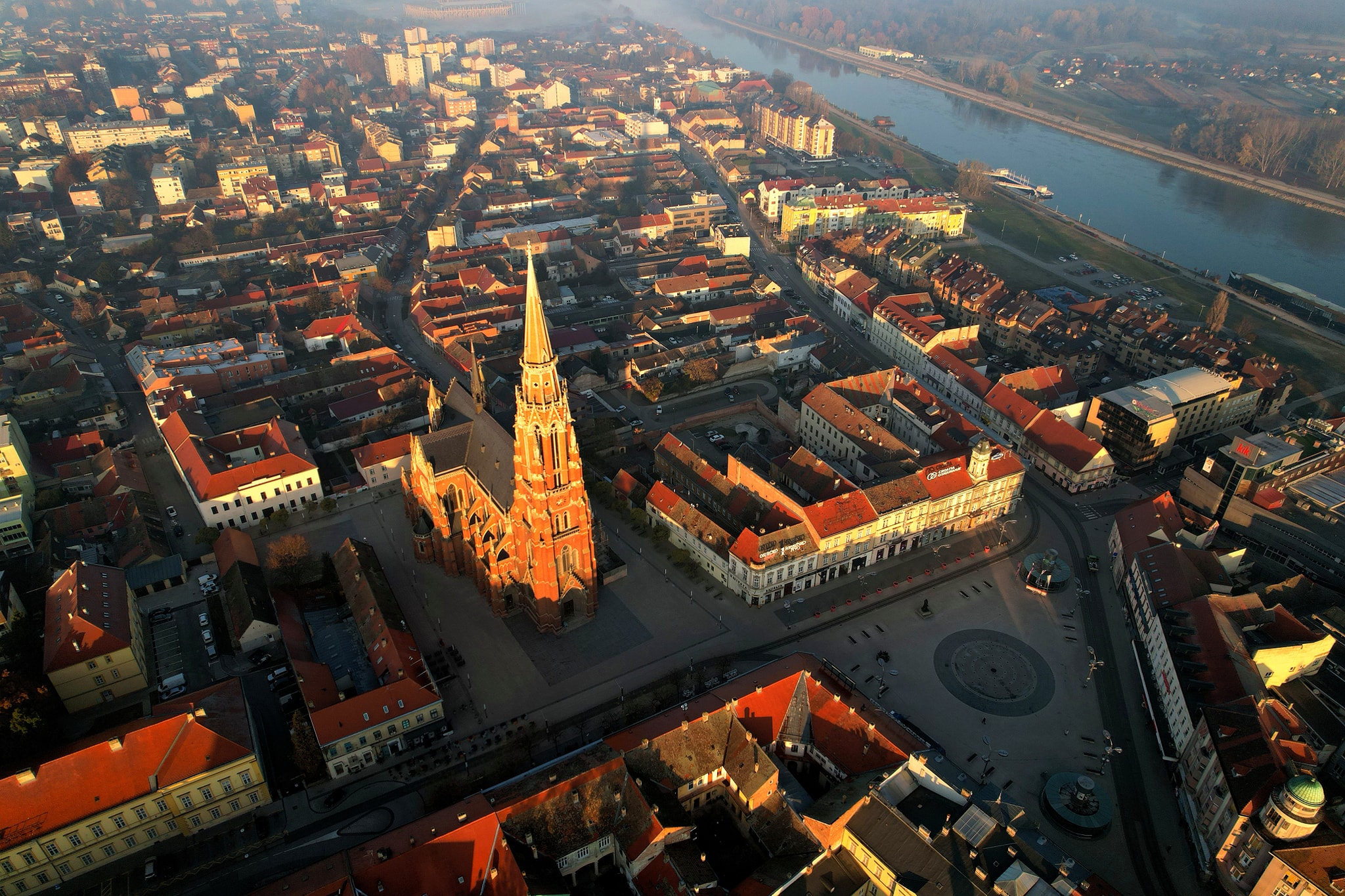
Every November 18, Facebook profile photos all over the country and the diaspora are changed to remember and honour those who made the ultimate sacrifice on the anniversary of the fall of Vukovar. All the politicians and thousands of Croats from all over the country head to the Hero City to pay their respects. It is an intense and emotional day, one which I documented in 2019 in Vukovar Remembrance Day Through the Eyes of a Foreign Resident.
But come November 19 and Vukovar - and the east - is forgotten for another 364 days until November 18 comes around again.
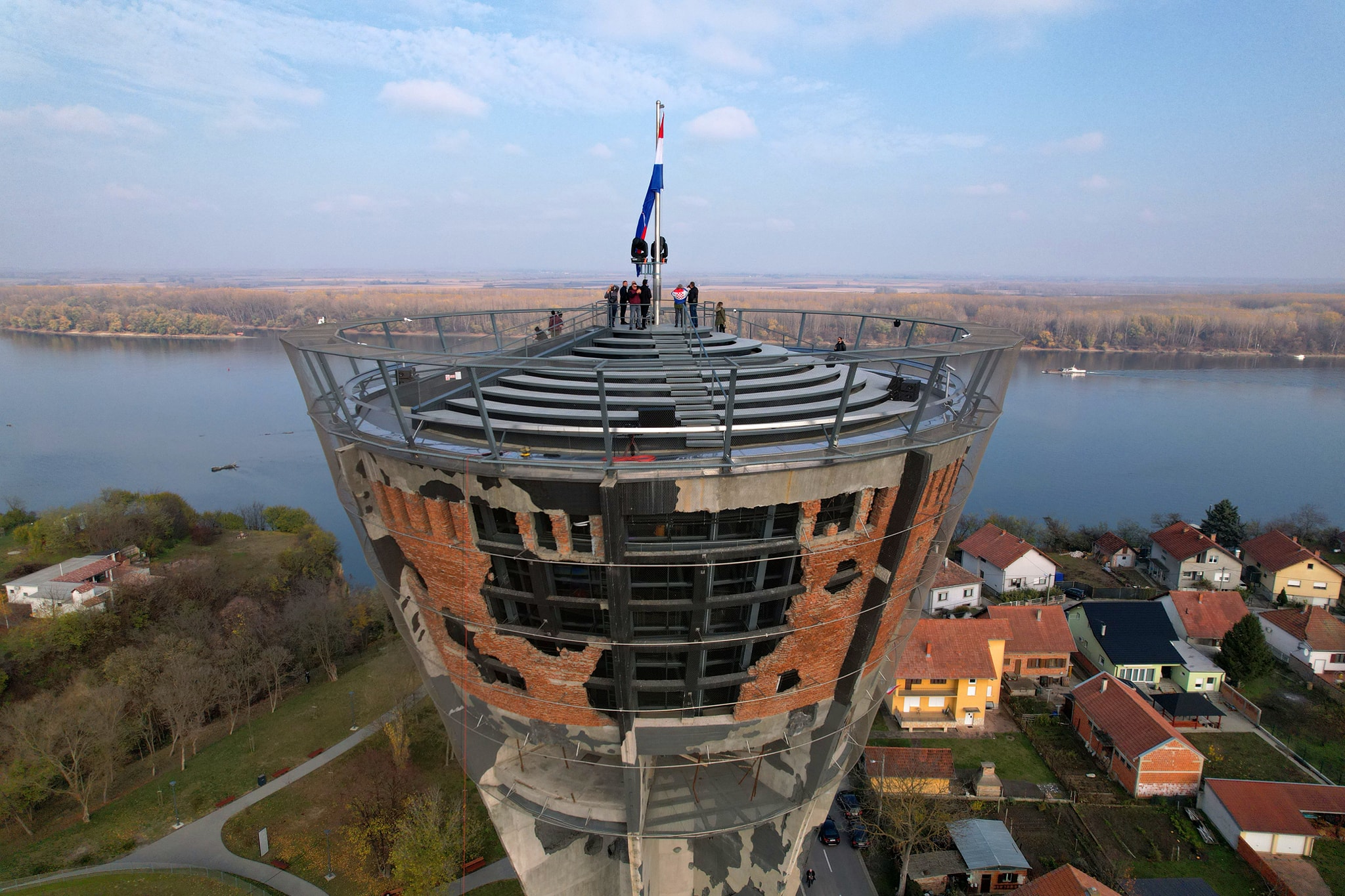
Despite bearing the brunt of the Serb onslaught in the Homeland War, and despite so many promises from politicians over the years, it seems to me that Slavonia has been treated like an embarrassing handicapped cousin that is best kept out of the limelight and gently ignored. Acknowledged only when necessary.
And not just by the politicians.
I have been genuinely shocked at how few of my Croatian friends have ever been to Slavonia, including those among the 200,000 Croats who go skiing abroad each year (the point here is not about skiing, but having the income to travel). And I am even more shocked at how little many of them know about eastern Croatia. Simple questions such as...
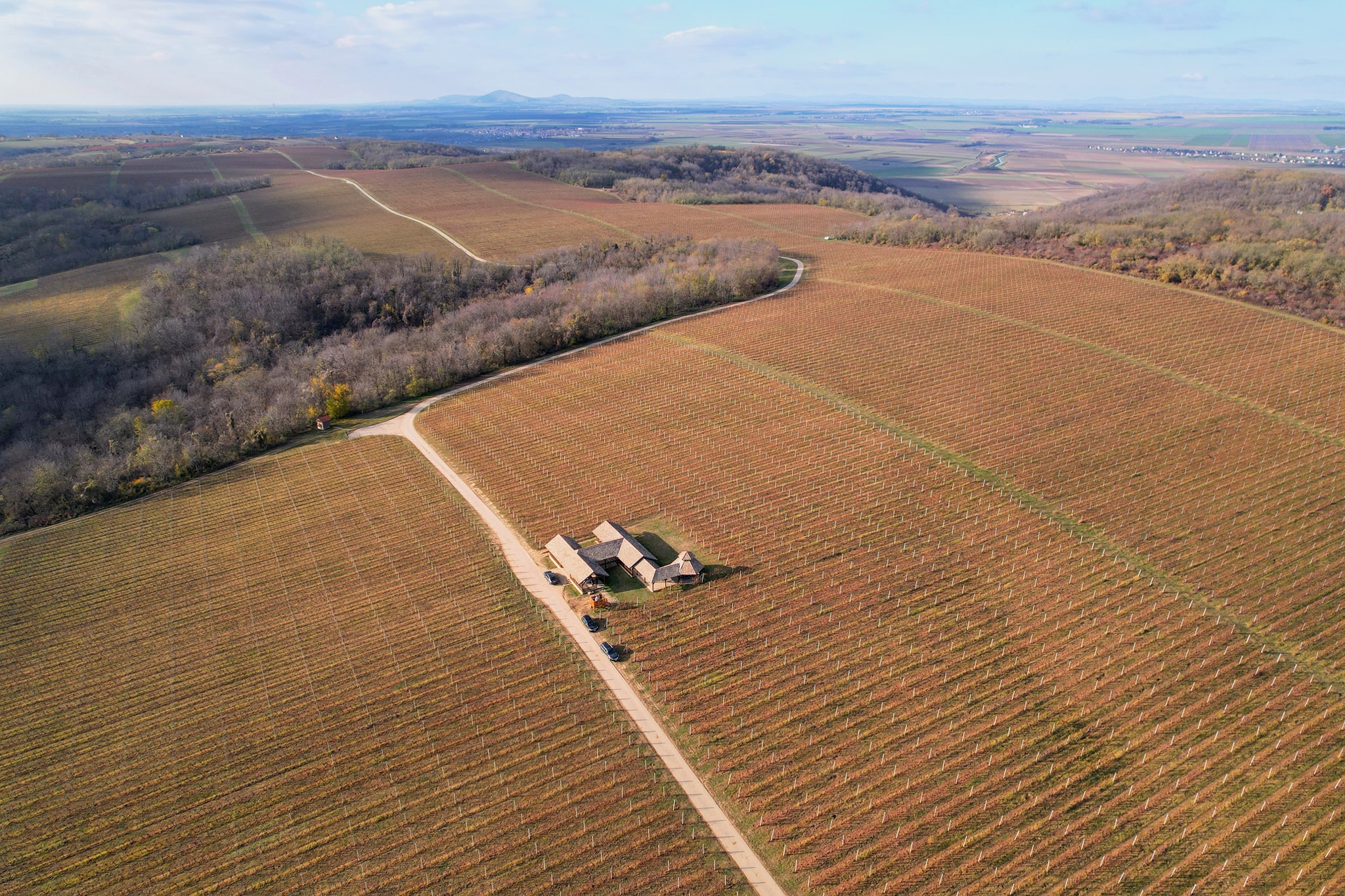
What is the capital of Baranja?
Can you name three famous buildings in eastern Croatia, not including the Vukovar Water Tower?
Where is the cradle of Indo-European civilisation?
Which Croatian wine was served at the Coronation of Queen Elizabeth, as well as the weddings of Princes Willliam and Harry?
... have been met with largely blank stares when I asked friends in Zagreb.

Slavonia is portrayed in the media as a sad place of mass emigration, struggling to move on from the war, where good news rarely exists. For many Croats, the whole of eastern Croatia is a blur associated with the aftermath of war, emigration, and economic stagnation.
Next week, during my panel discussion, Storytelling and the Nomad Movement, at Digital Nomad Week based out of Bali, I will be announcing the launch of our new CROMADS platform, which connects Croatia's limitless authentic experiences to digital nomads and tourists, all over Croatia, 12 months a year. As part of the preparations for the CROMADS platform, I took Steve Tsentserensky to eastern Croatia for a 6-day tour of Croatia's two most easternmost counties.
Steve is a very talented American writer and videographer who was one of the first to receive the Croatian digital nomad permit. His promotion of Croatia has been relentless ever since, including this viral video on the digital nomad lifestyle in Croatia on CNBC News, which has already attracted over 300,000 views. He has also just been announced as the Zagreb Special Guest Digital Nomad Ambassador for 2021. Steve had absolutely no clue about eastern Croatia and so was in a similar position as many locals here in Croatia.
I contacted the tourist board directors of Osijek-Baranja and Vukovar-Srijem counties, Ivana Juric and Rujana Busic Srpak, and explained the mission to film the very best of the east for CROMADS. They kindly agreed to organise a 6-day itinerary for us. Steve will have a video report of the trip, including some truly epic drone footage, later in the month. But as today is Osijek's special day, let's take a tour of Slavonia Full of Life, the reality.
Day 1 - Zagreb to Ilok
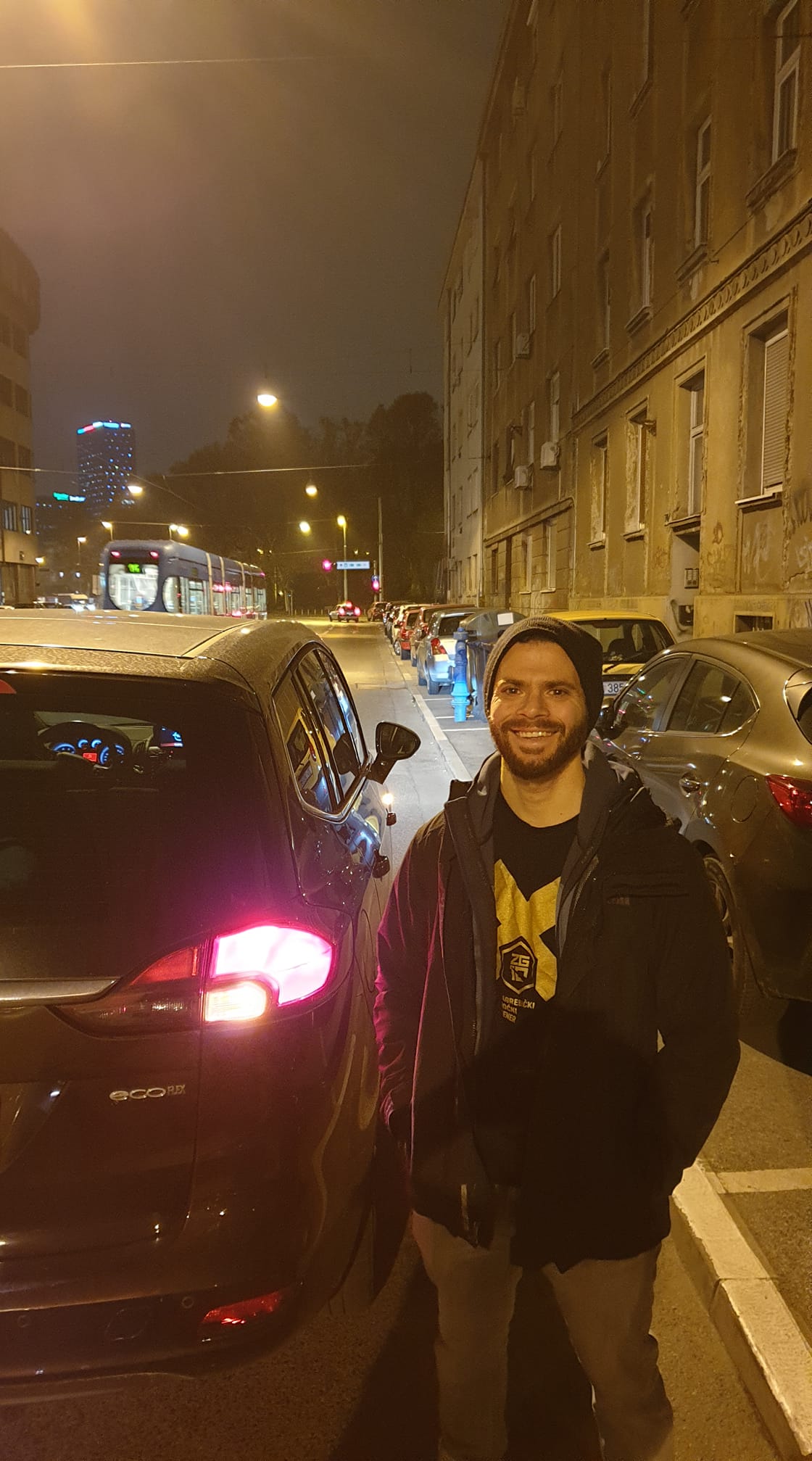
06:13 Zagreb, Day One. 6 days, 1 Yank, 1 camera. The mission - to discover if there is life in Eastern Croatia in November. #Ajmo Slavonia, make me proud and show us what you've got. With Steve Tsentserensky #CROMADS
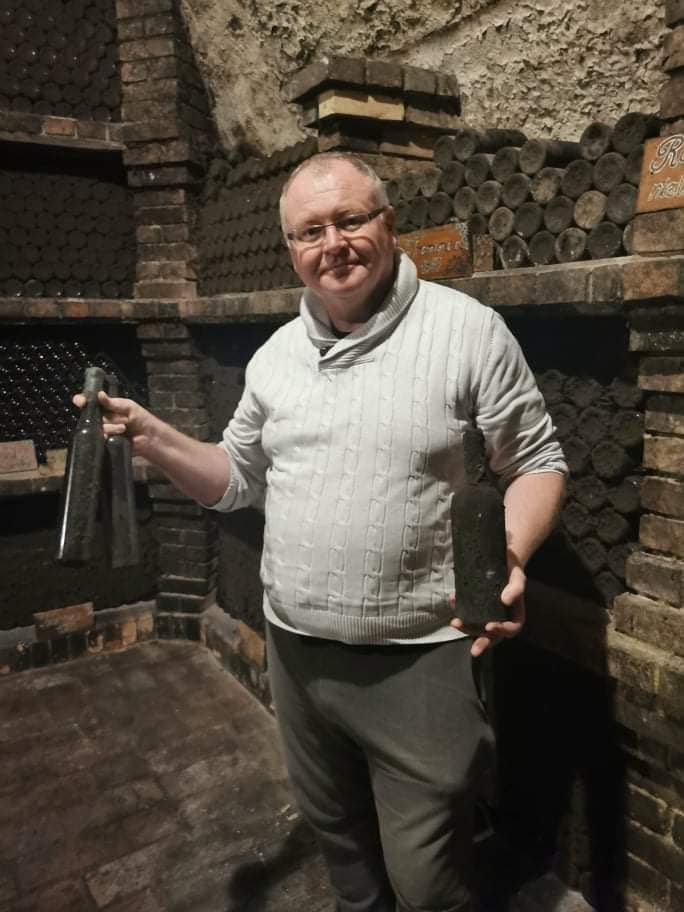
Our first stop was the easternmost point of Croatia, which is actually closer to Zagreb than Split. Ilocki Podrum and its phenomenal vineyards are the gateway to Western Europe in Ilok. And where else in the world can you hold three bottles of the same wine what was served at the Coronation of Queen Elizabeth II in 1953, as well as the weddings of both Prince William and Prince Harry? Learn more about the magic of Ilocki Podrum in this TCN visit a couple of years ago.
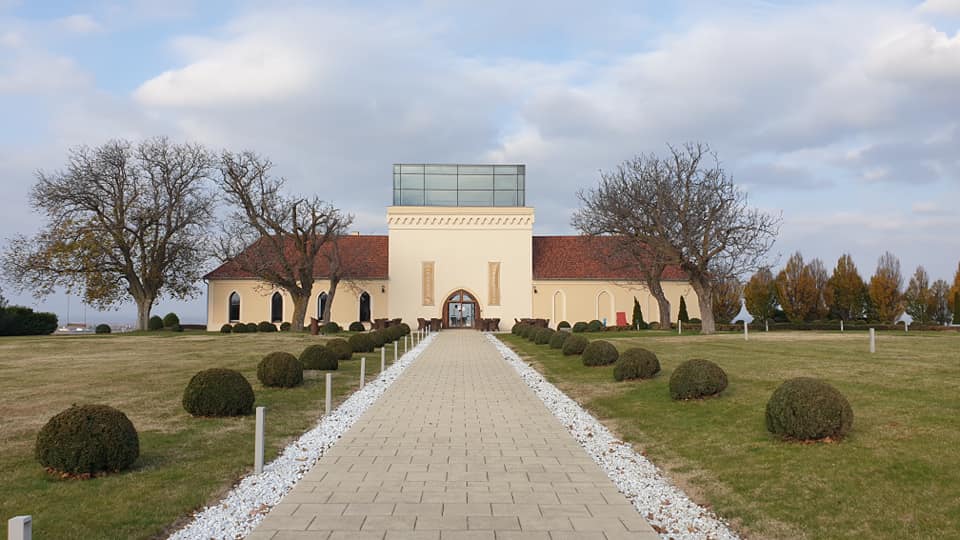
The place to stay is the magnificent Principovac Estate, which is perched on a hill and overlooking the endless vineyards.
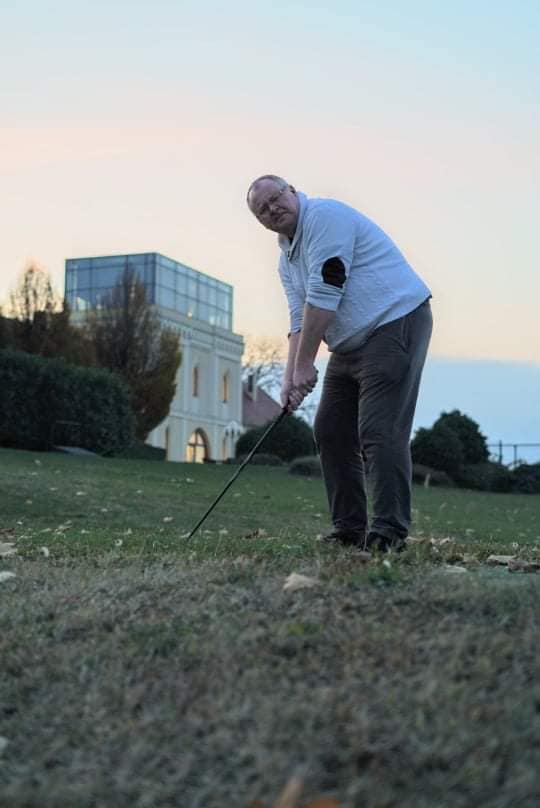
And there was just enough time after an excellent wine sampling to brush up on my golfing skills before dark.
Day 2 - Vucedol, Ovcara, Vukovar, Otocki Virovi and Vinkovci
Did you know that the cradle of Indo-European civilisation was in eastern Croatia, and that there is an award-winning museum built into the location? Learn more about incredible Vucedol on this TCN 2019 visit.
Very close by and a much more recent memorial at Ovcara, to the victims of the 1991 massacre of around 260 patients of the Vukovar Hospital, who were transported to Ovcara once Vukovar was conquered, tortured and murdered. The bullets in the floor are but one poignant reminder.
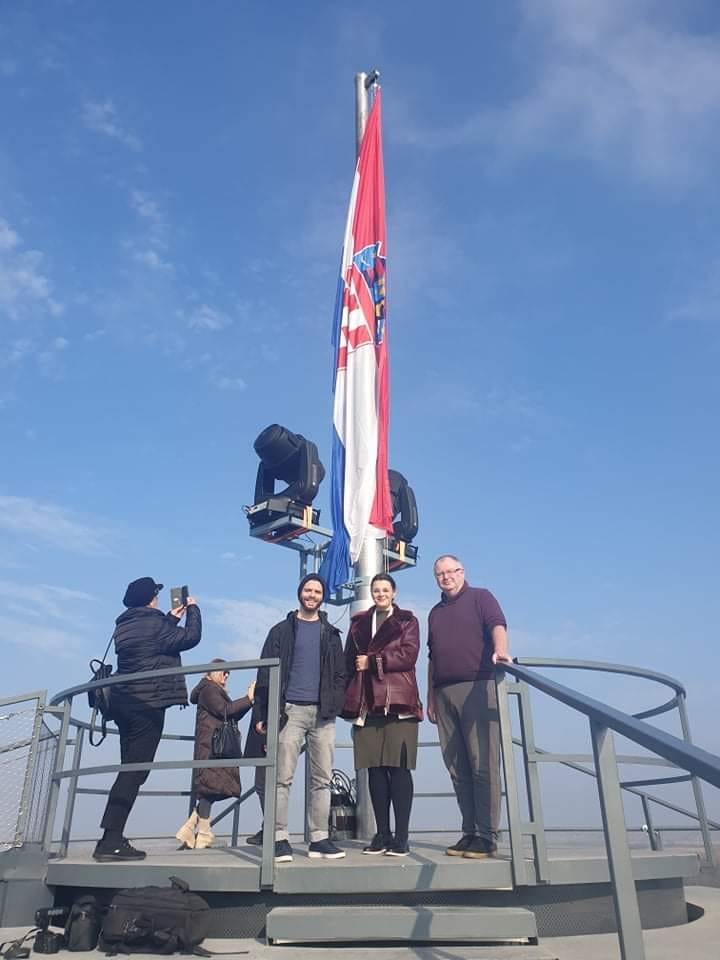
The Vukovar Water Tower is a national symbol of resistance and pride. While the exterior remains untouched, the interior has been renovated, and the viewing point at the top is a popular attraction, as well as giving outstanding views of the city, the Danube and across to Vojvodina in Serbia.
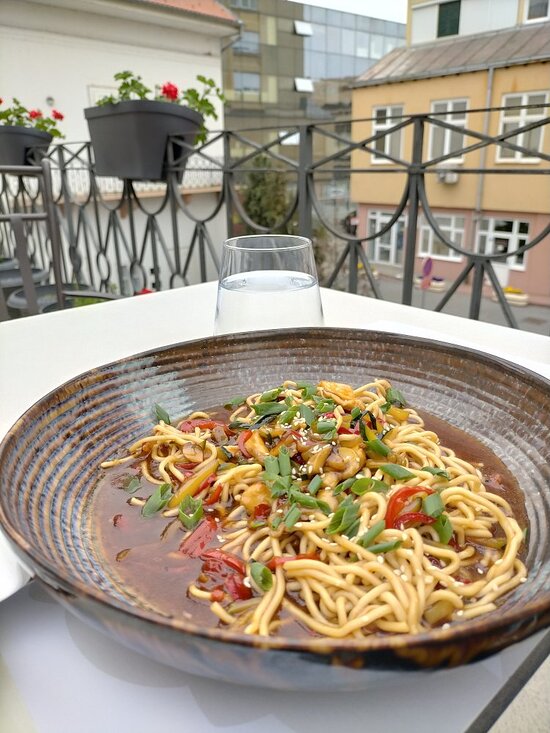
A vegetarian when the Slavonian diet would allow it, Asian vegetable wok noodles were a pleasant surprise for Steve at the outstanding Lola in the centre of Vukovar.
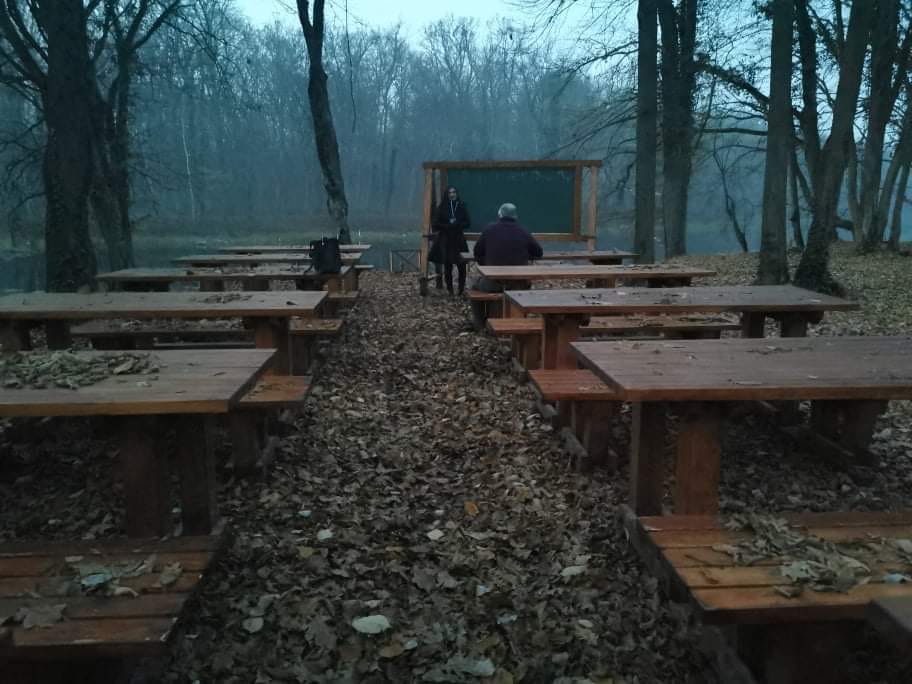
And then for something completely different - a journey into the classroom back in nature, as we headed into the forest to the recently opened Otocki Virovi Bio-ecological education centre. Amazing carbon-neutral hotel, wellness and conference facility in the middle of the forest. I will be returning with the TCN crew for a teambuilding weekend in Spring.
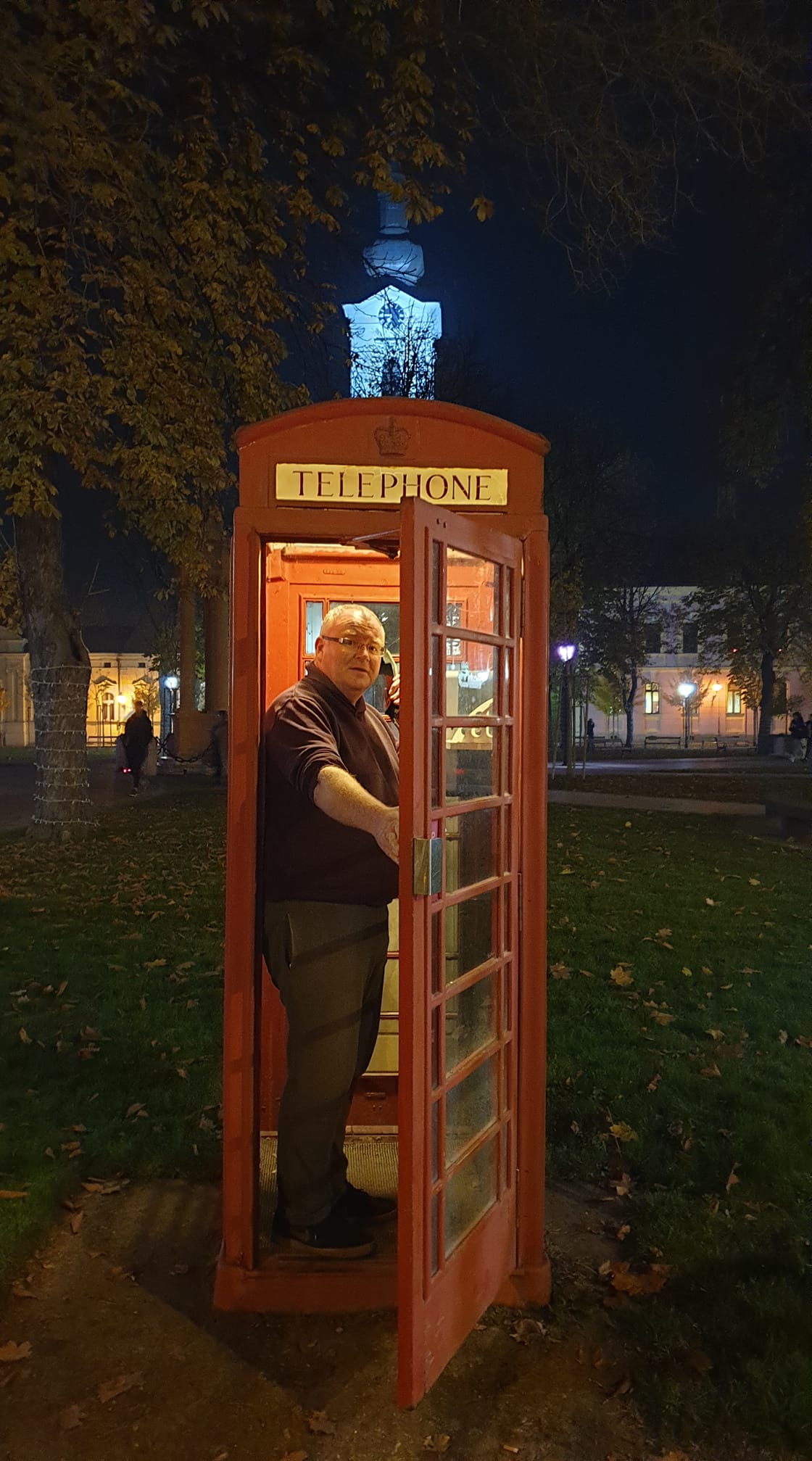
You don't see many public telephones in Croatia these days, but here is one in Vinkovci, the oldest continuously inhabited town in Europe, dating back some 8,300 years. Learn more in Vinkovci: 10 Things to Know about Europe's Oldest Town.
Home to the oldest calendar in Europe, whose symbols adorn the main pedestrian street. Nice shot, Stevie T!

And far from being dead, Vinkovci was full of life at the rockabilly bar Hang Loose that night.
Day 3 - Vukovar Remembrance Day and Foreign Veterans BBQ at The White Boar
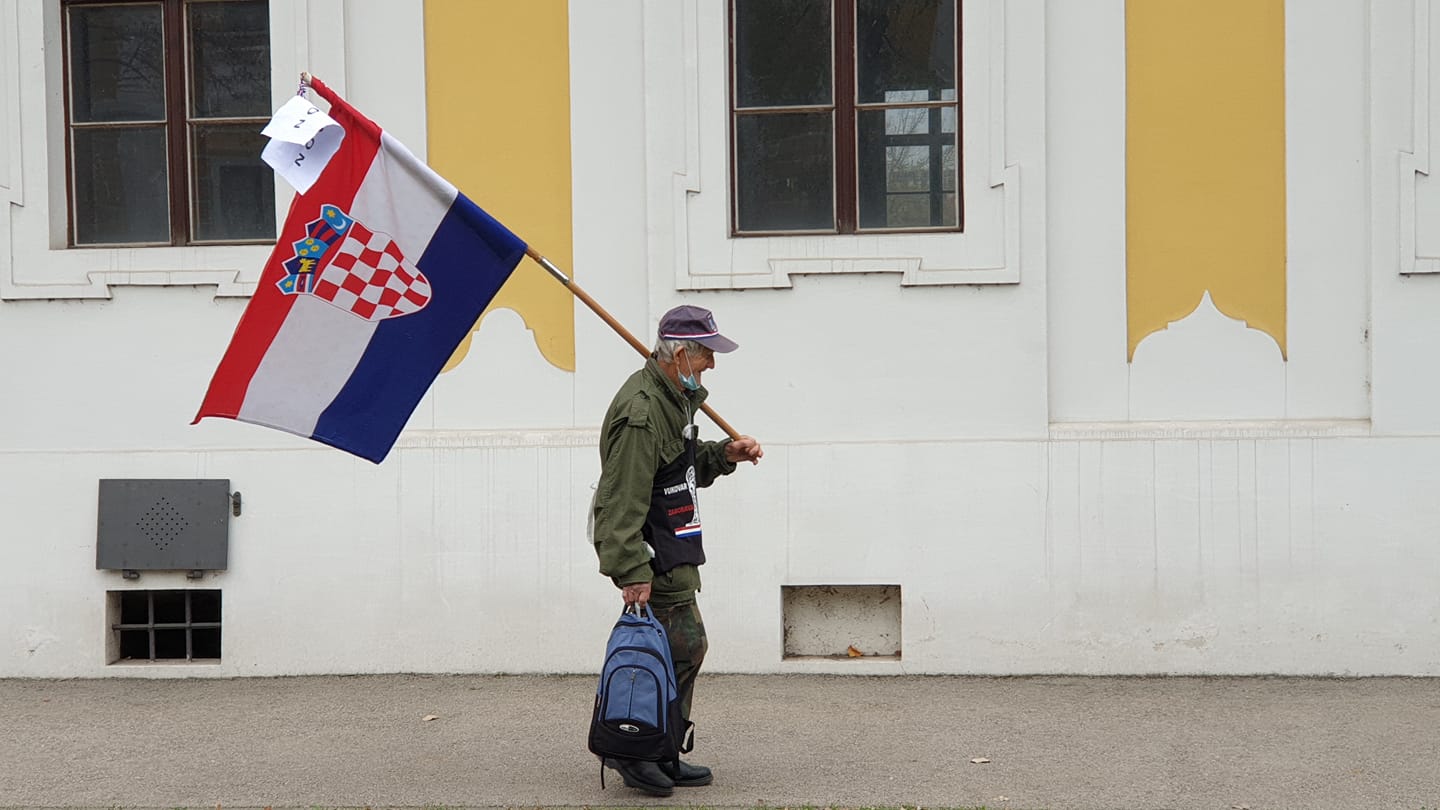
November 18 is Vukovar Remembrance Day, now a national holiday. Some 50,000 people turned up for the 30th anniversary of the fall of Vukovar.
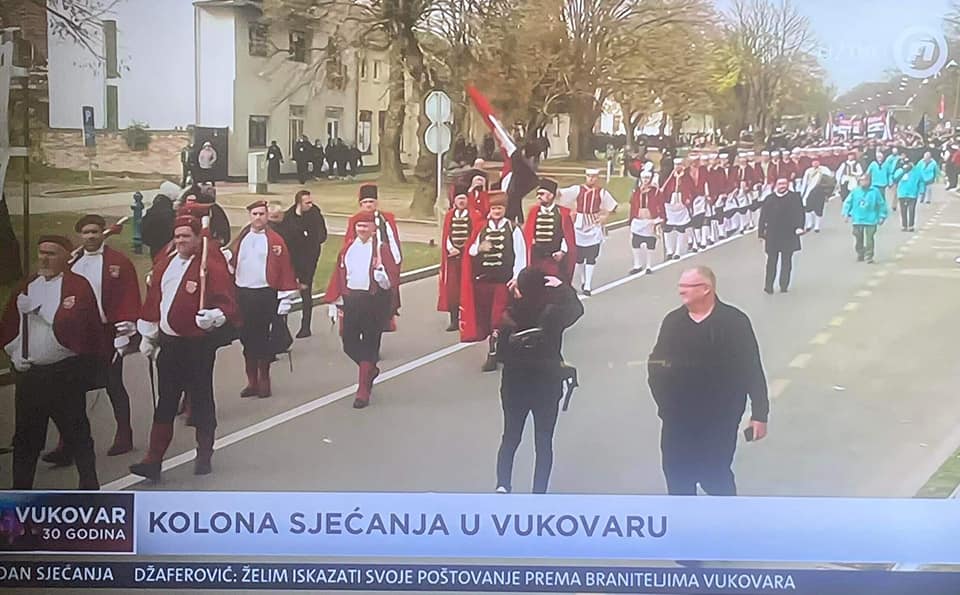
We inadvertently found ourselves on national television as we filmed. You can learn more about this very emotional and intense day in Vukovar Remembrance Day Through the Eyes of a Foreign Resident.
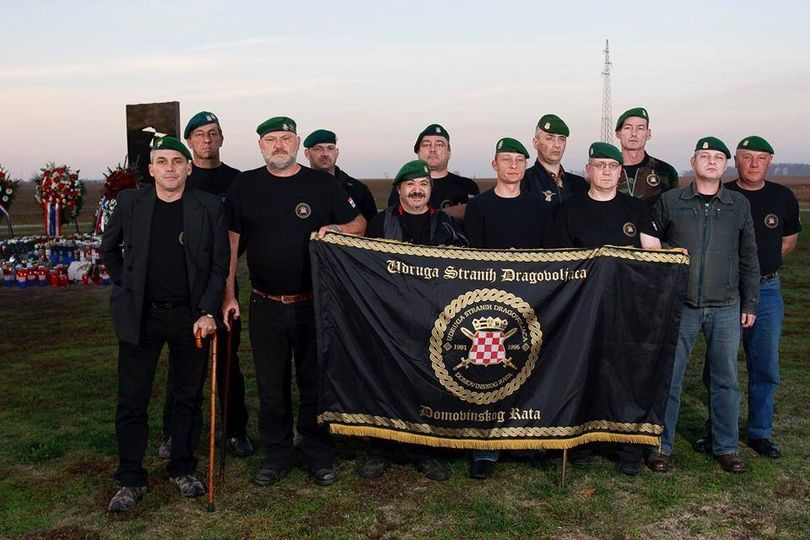
There is a very special event each year on November 18, as all the foreign veterans who fought for Croatia gather to remember and to catch up.
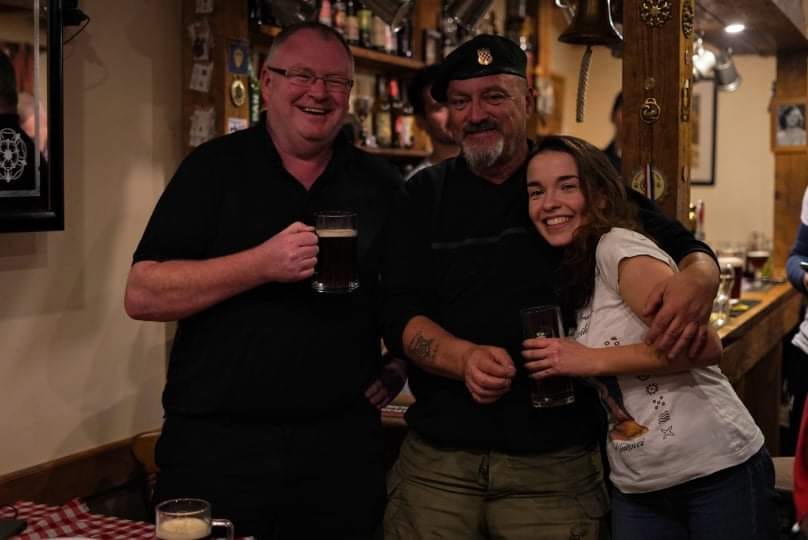
The barbecue is hosted each year by Vinkovci Yorkshireman Steve Gaunt, from his English pub, The White Boar, which is literally in a field in the middle of nowhere.

From a portrait of Queen Elizabeth on the wall to veterans in uniform, Steve's face was priceless. He later described it as 'the most far-out bar experience of my life.'
Fortunately, we had the good sense to leave early, as things got a little lively later on as the veterans retured for the night and the kids took over, as Steve's public information film showed (1 minute and worth watching to the end).
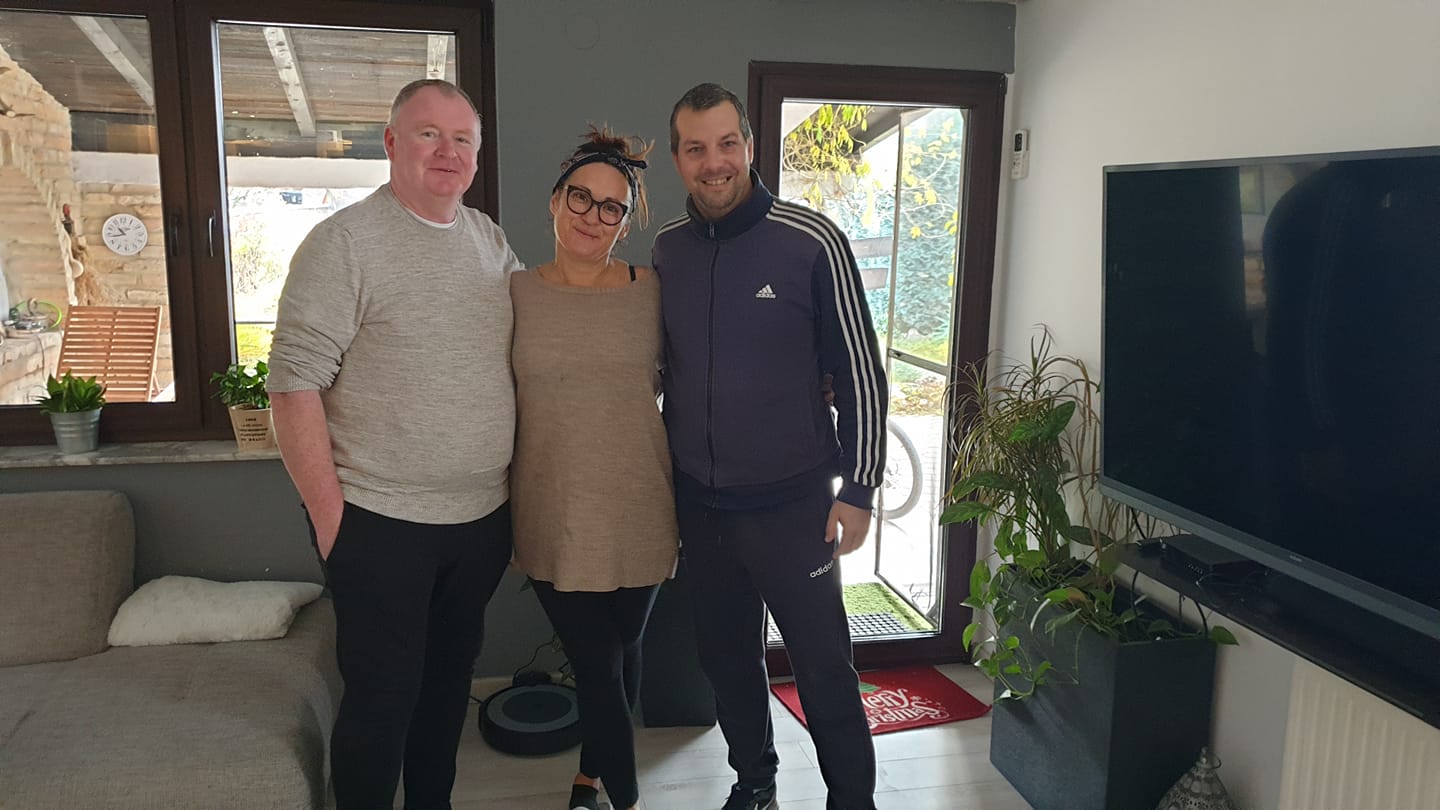
No tour of Slavonia would be complete without a visit to the man who has done more for tourism in Slavonia than the rest of us combined, and it was great to spend the night at the home of Goran Rihelj and his lovely wife, Mirjam. Great kulen!
Day 4 - Dalj, Erdut and Osijek
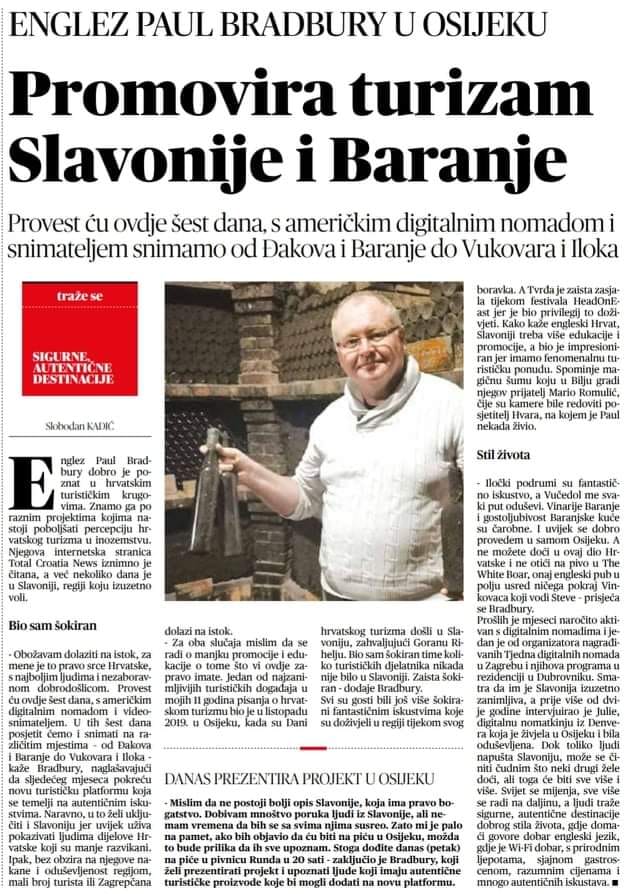
By now, the regional press had picked up the story of our visit, and the fact that I had invited anyone who wanted to meet and discuss tourism and our new CROMADS project to come to Pivnica Runda in Osijek.
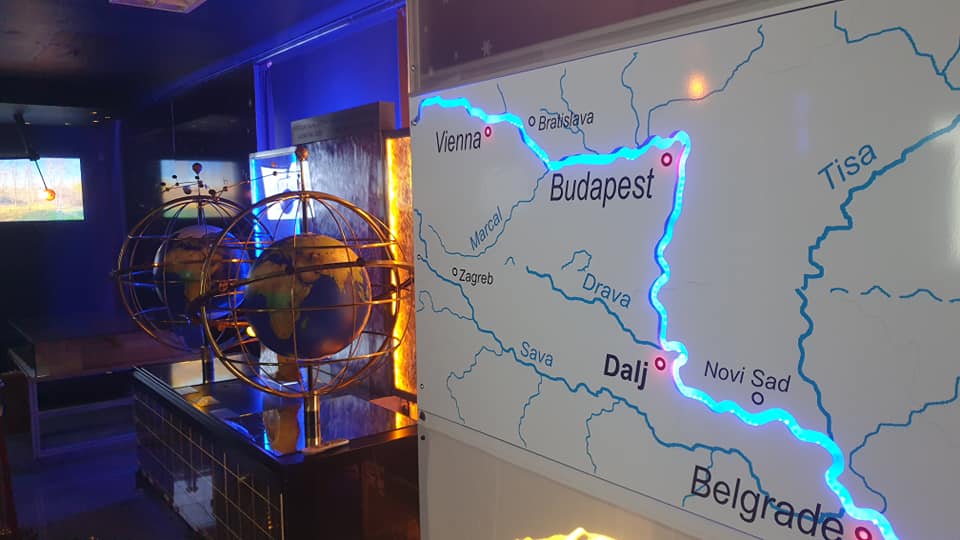
But first we had to survive Day 4, which began in Dalj at the incredible Milutin Malinkovic Birthplace Museum.
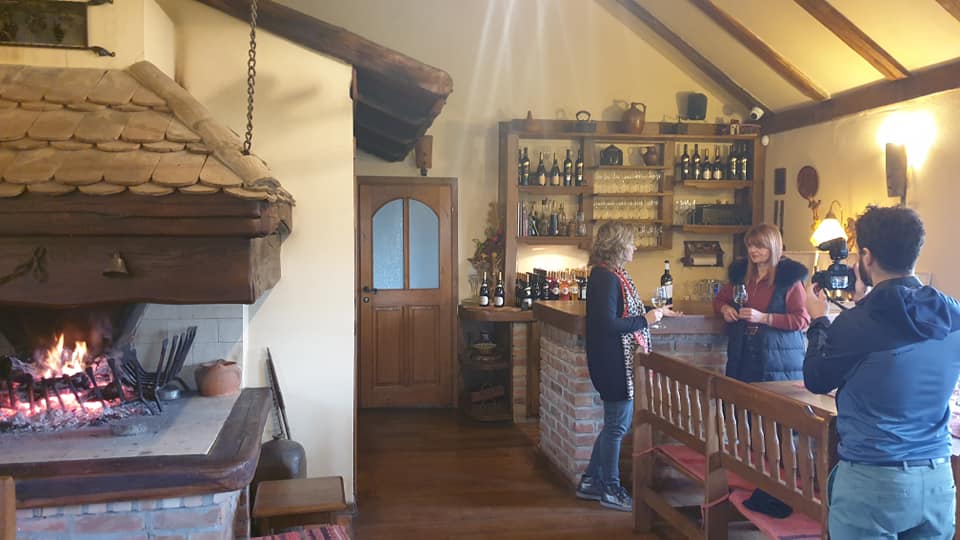
Dalj seemed to be full of secrets, with the Jasna Antunovic Winery next up. Jasna was not only apparently the first female-owned winery in Croatia, but also the 2017 Decanter winner of the best white wine in continental Croatia.

Some claim it is the largest wine barrel in the world in continuous use, over in Erdut. While I cannot confirm that, it would take me a day or two to work my way through the 75,000 litres of Grasevina contained therein.
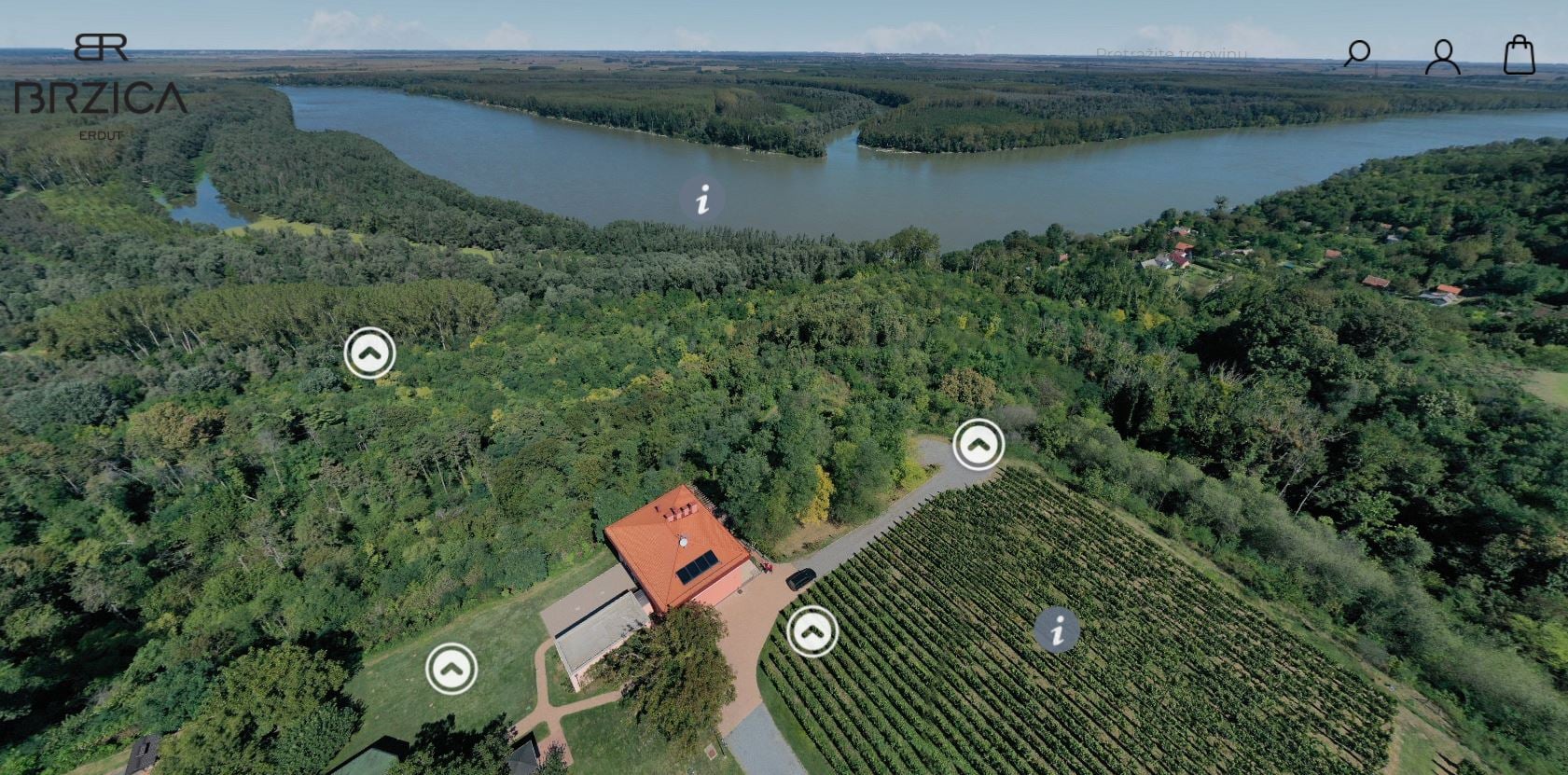
And for a winery with a water view, you could do worse than Ivo Brzica on the banks of the Danube. Among his several excellent wines, what I believe to be the only Vranac produced in Croatia.
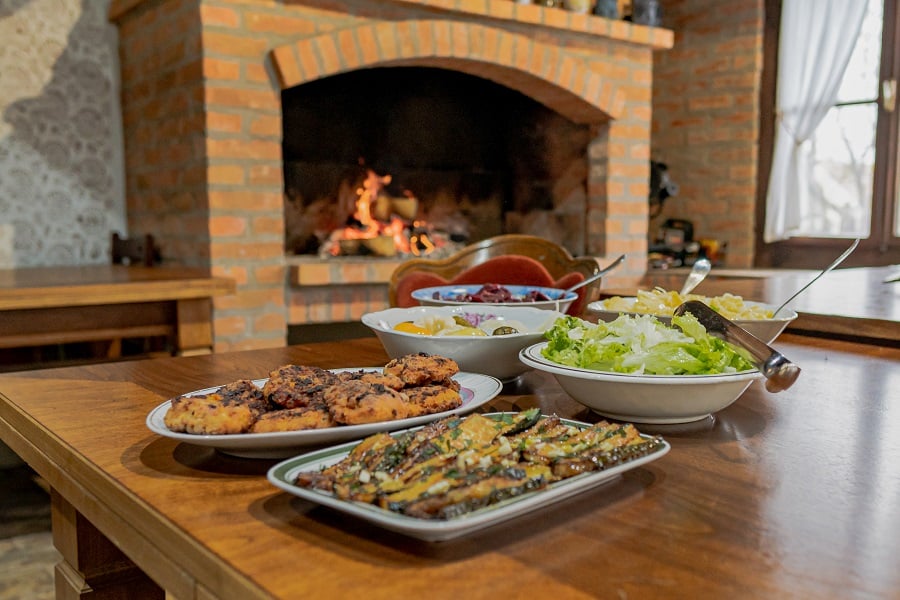
Where else to go for a spot of lunch than the epic OPG Ethno Kuca Stari Dud?
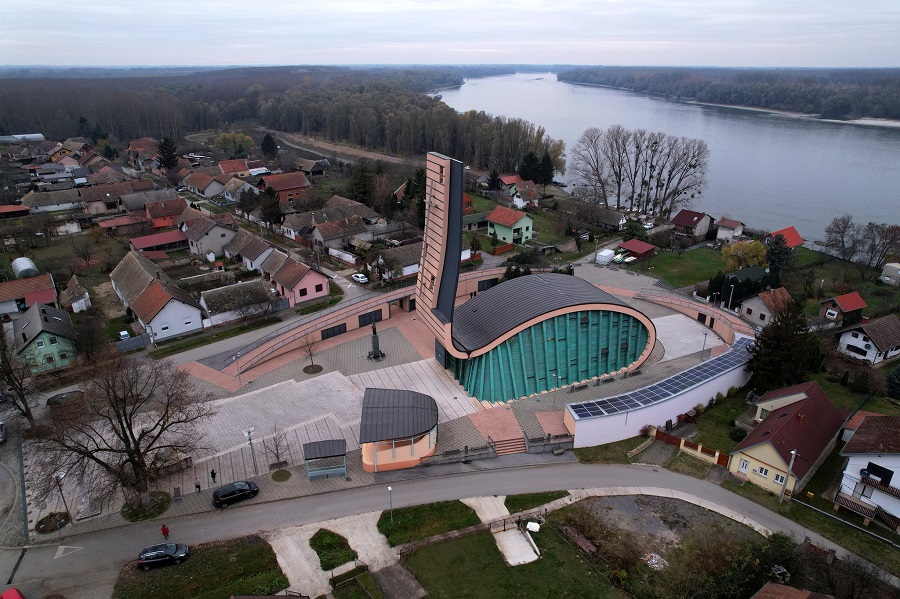
Unusual church fan? Head to Aljmas.
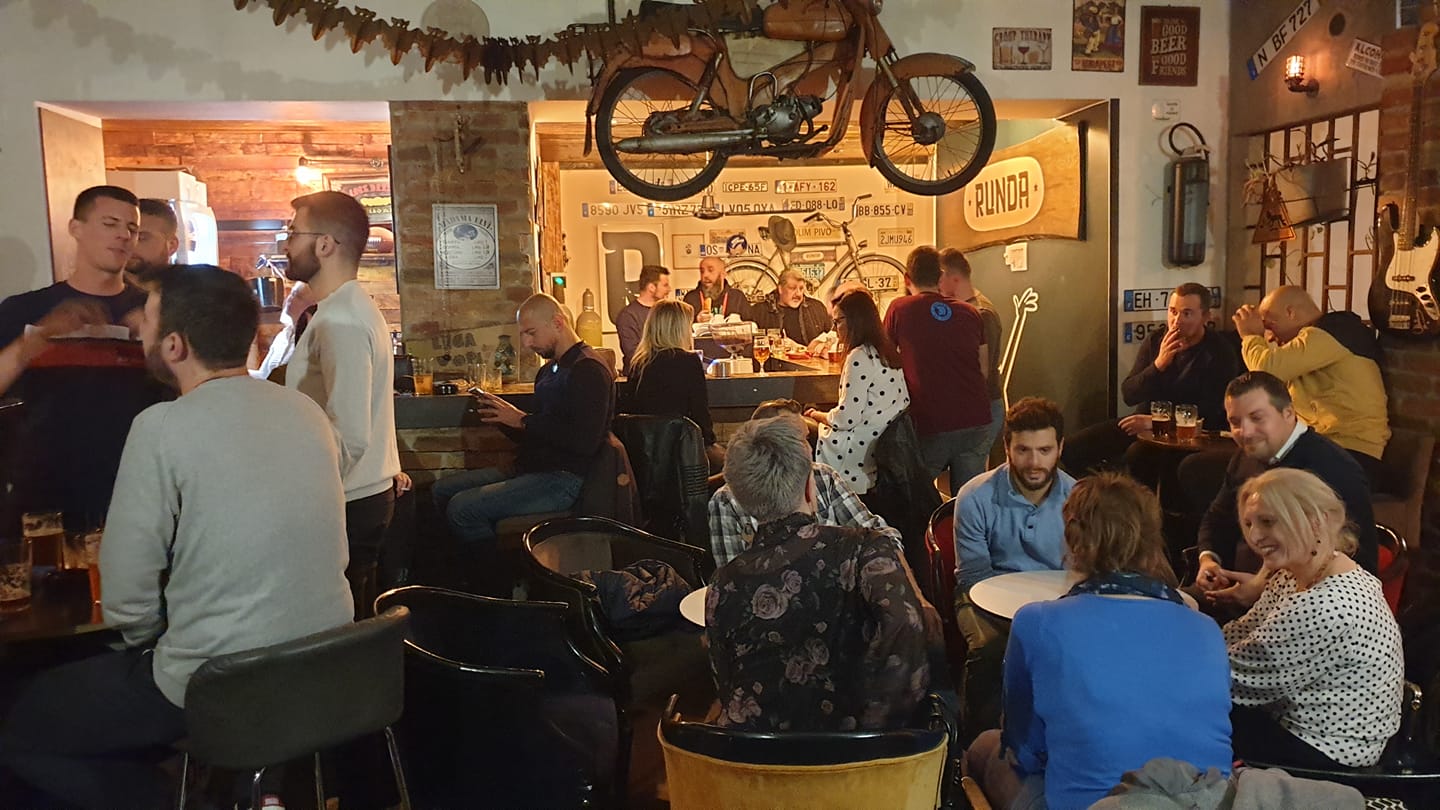
But Osijek was calling and after a fantastic walking tour of the town, I had to get to Pivnica Runda for 19:00. Would anyone show up, or would I be Billy No Mates?
They came.
They were magnificent.
Such passion, such ideas, such creativity. So Slavonia Full of Life.
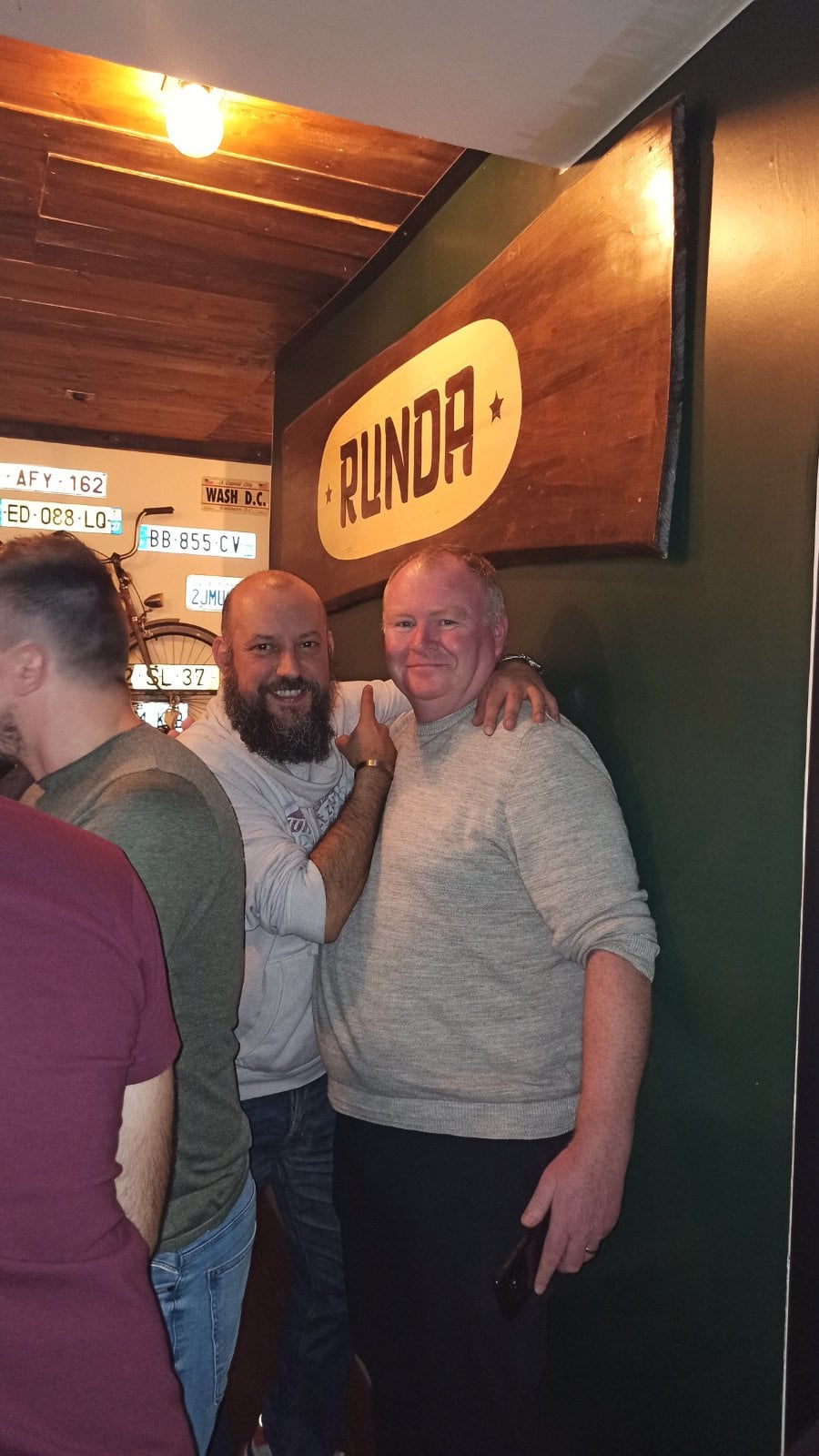
All hosted by the King of Fun.
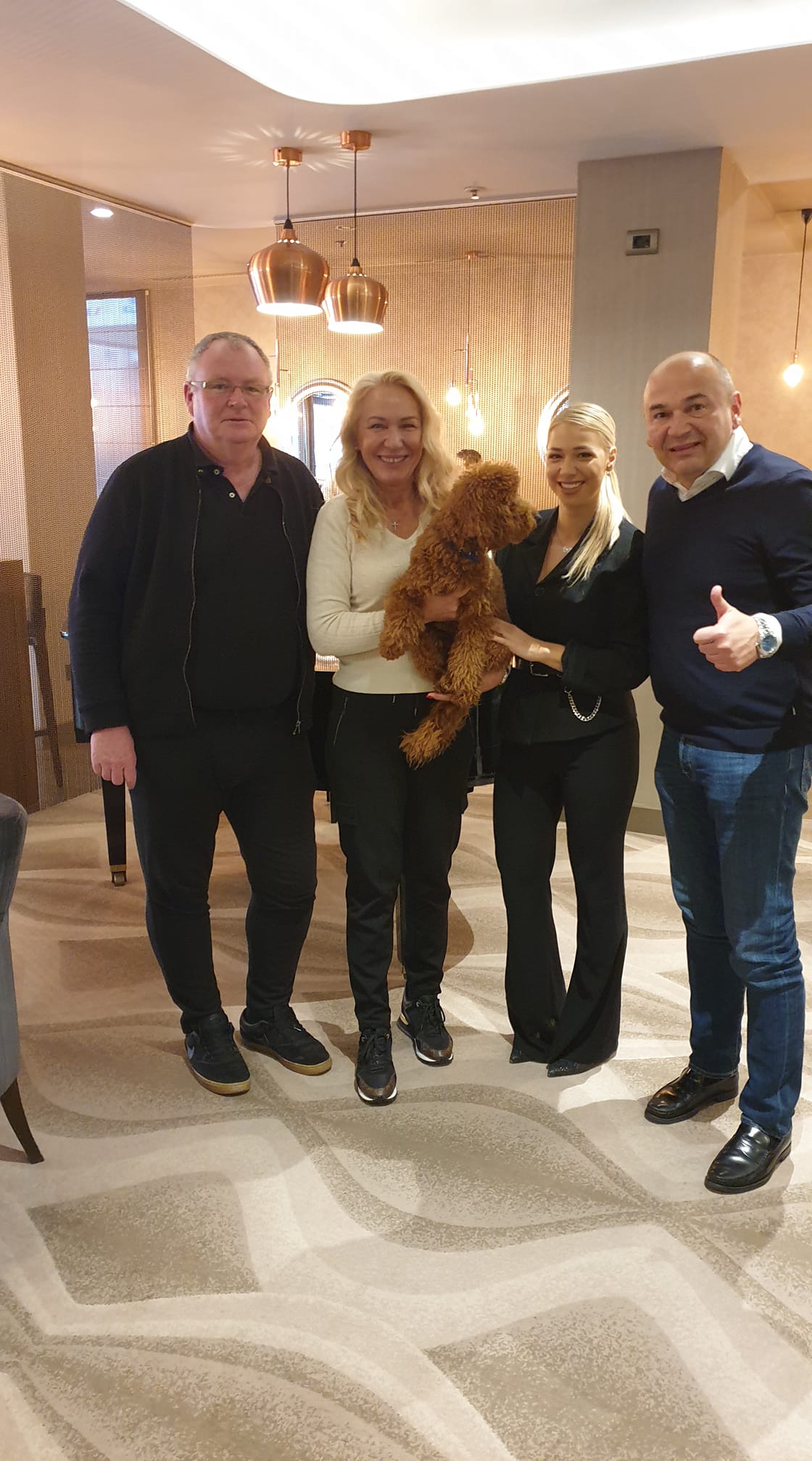
One immediate consequence of one conversation that evening was a very pleasant coffee with the parents (and dog Mali) or Osijek-born tennis star, Donna Vekic, at The Westin in Zagreb a few days later. A rather fabulous exchange of ideas, and it was very encouraging to learn the Vekic vision and investment plans for Osijek
The walk home to the fortress was a little hazy, but Facebook confirms that the streets of Osijek were very much full of life way past midnight.
In November.

And when you have old town accommodation of the quality of Maksimilian, you know your stay in Osijek will be perfect.
Day 5 - Baranja
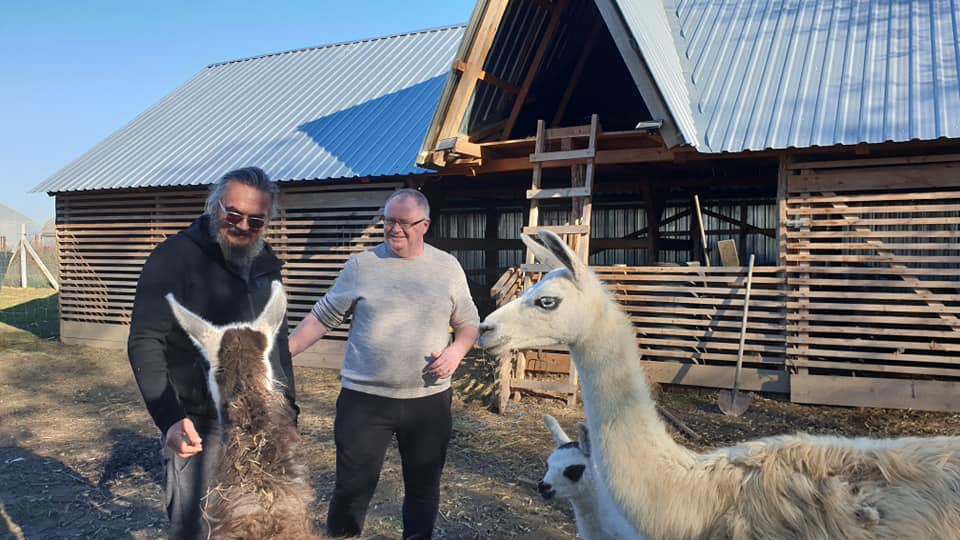
Day 5 - Baranja, and the perfect start with one of my all-time heroes, the legend that is Mario Romulic and his quite incredible Magical Forest project.
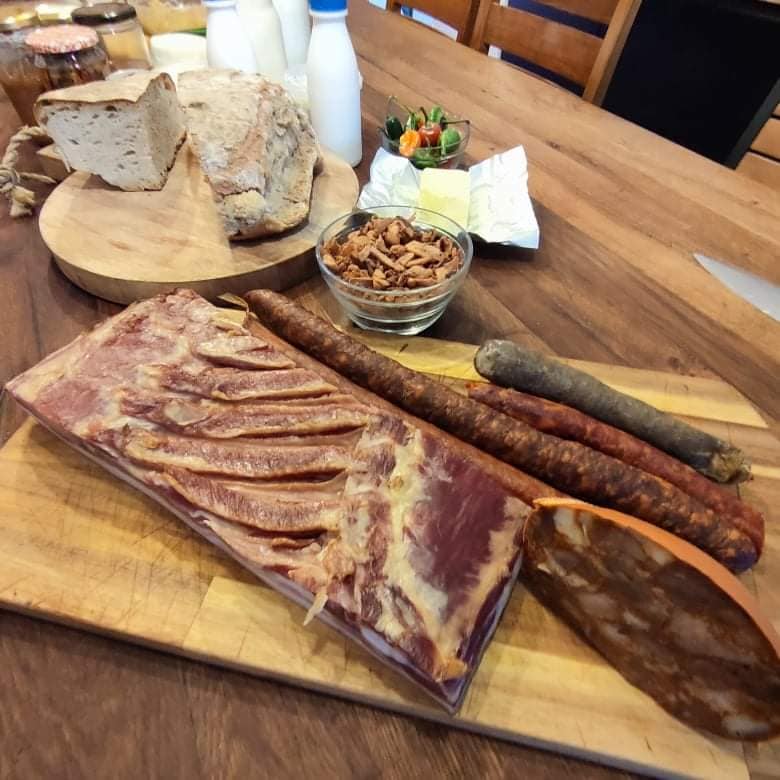
Always a strong vegetarian offer at the Romulic kitchen table.
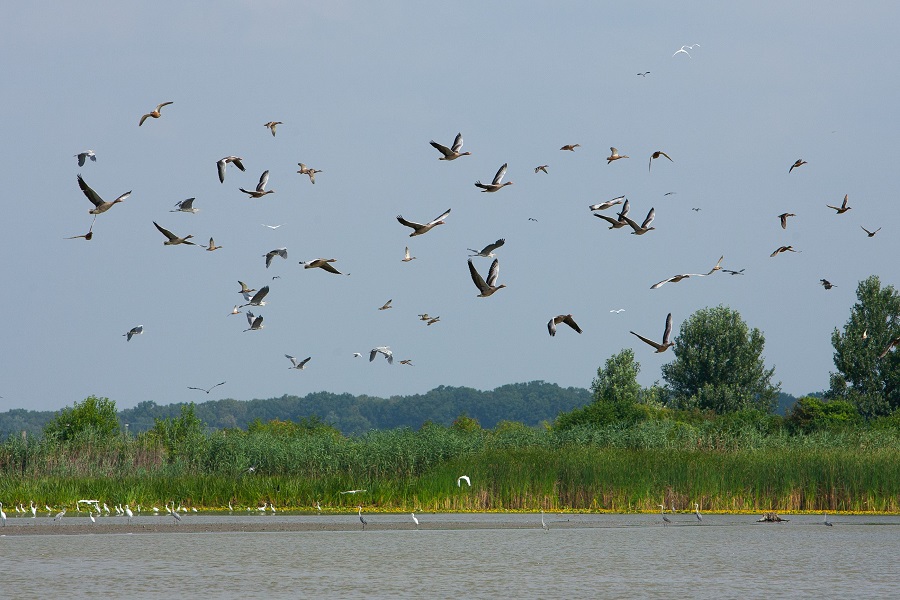
Kopacki Rit Nature Park, one of the most important wetlands in Europe. Learn more in the TC Kopacki Rit in a Page guide.
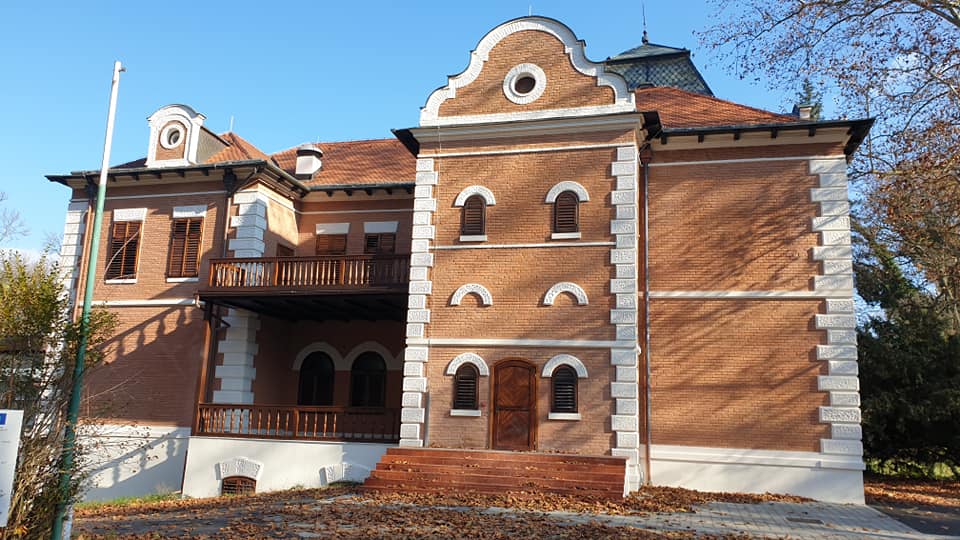
Every dirt track in Baranja seems to lead to its own story. 30 years ago, Tito's former villa in Tikves hosted the final meeting between Milosevic and Tudjman in April 1991. Next year, the villa reopens as a presentation and education centre.
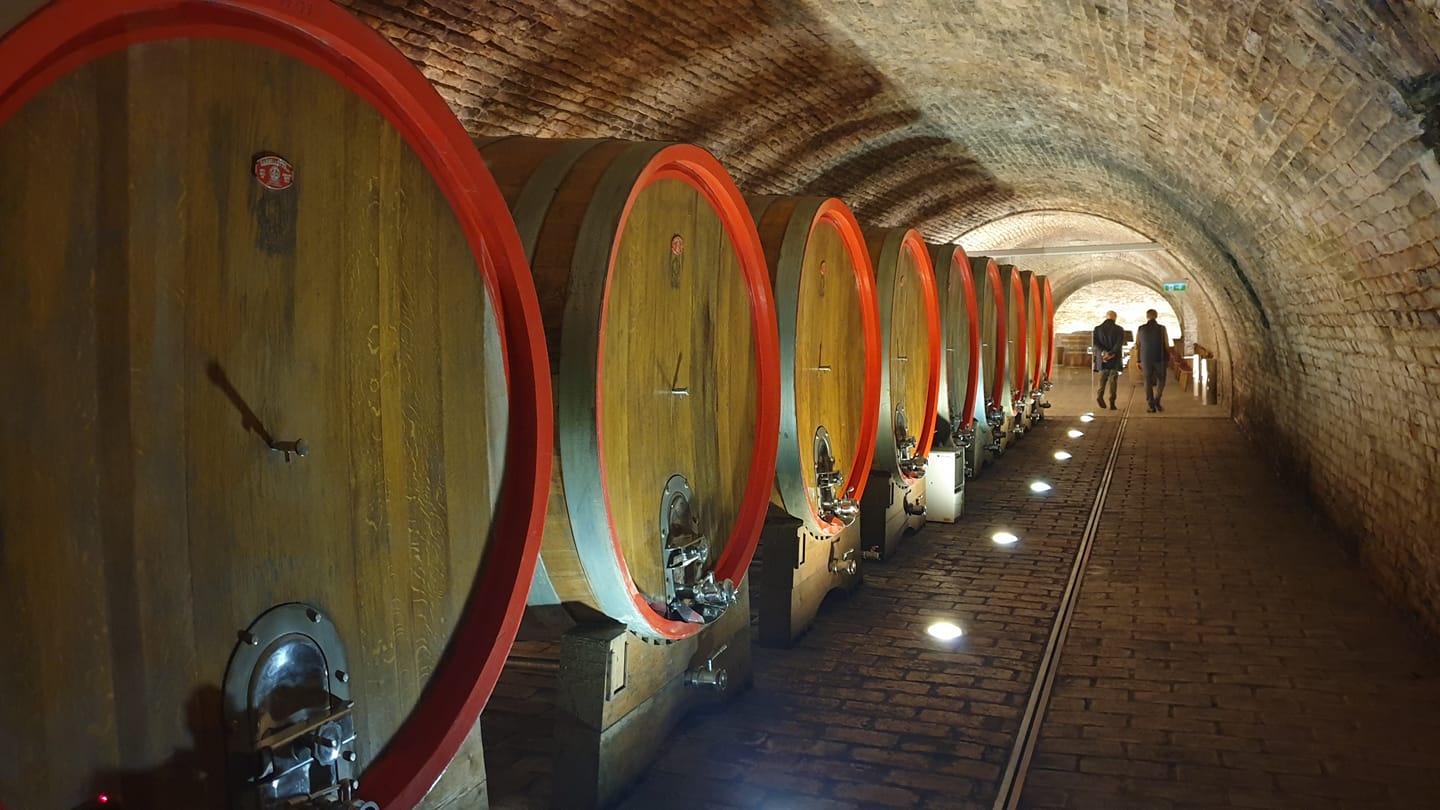
Day 5 was significant as it was the first day of the tour where we somehow managed to avoid alcohol until after midday.
And then... Belje.
The Belje vineyards went on for days, with grapes left on the vines by the viewing point, so that visitors could sample them.

All this wine was making us hungry. Next stop, one of the finest institutions in all Croatia - Baranjska Kuca in Karanac.

A little slice of Slavonia Full of Life, Baranja style.
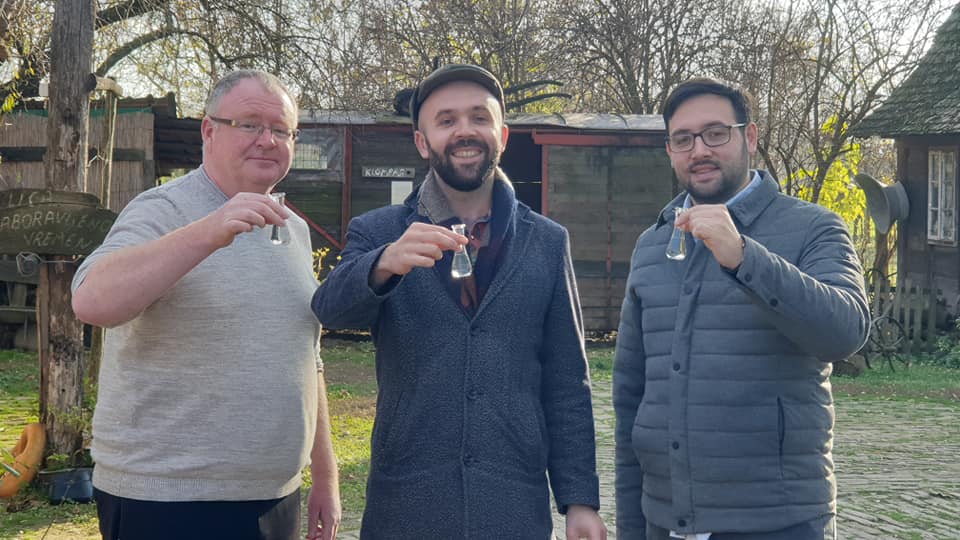
Two of the most dangerous men on the planet, with one of the best tour agencies, Kulen Travel.
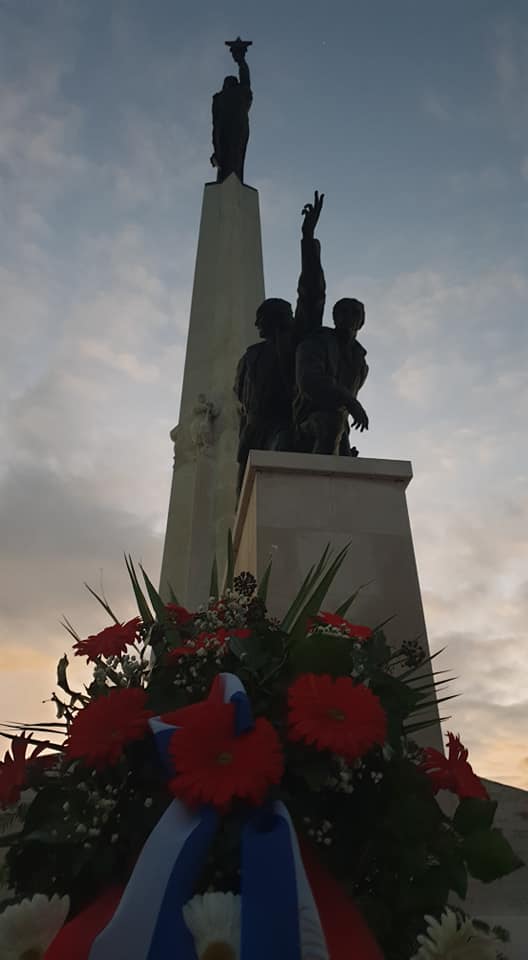
As far as war memorials go, Batina is right up there with the very best, overlooking the Danube, Hungary and Serbia.
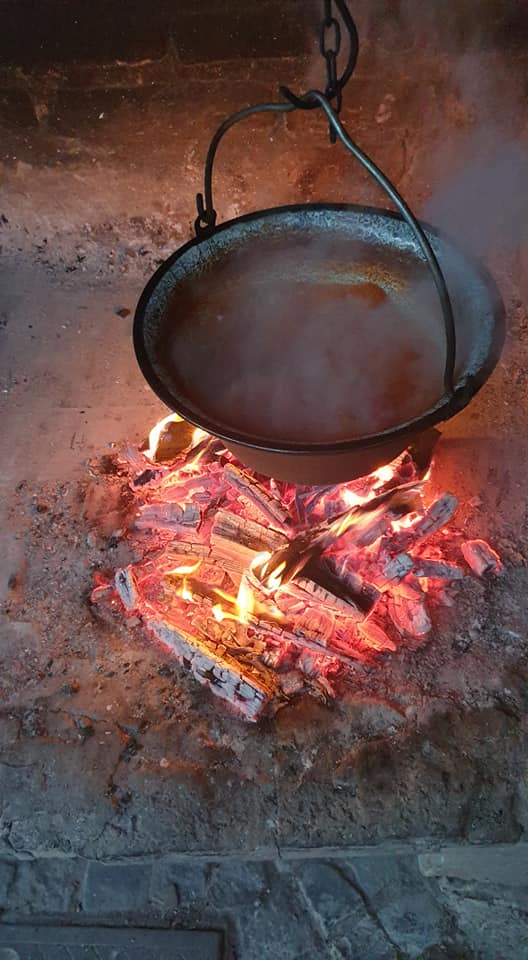
But Baranja was not finished with us yet.
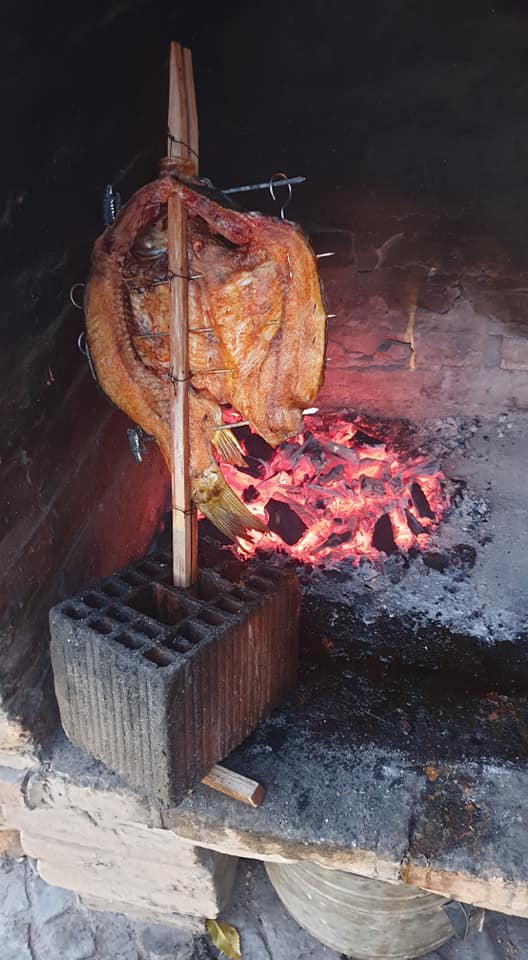
There was one more stop before we could return to Osijek.

And yes, another example of Slavonia Full of Life, the wonderful Josic wine tasting experience in Zmajevac.
And then the Osijek fun began...
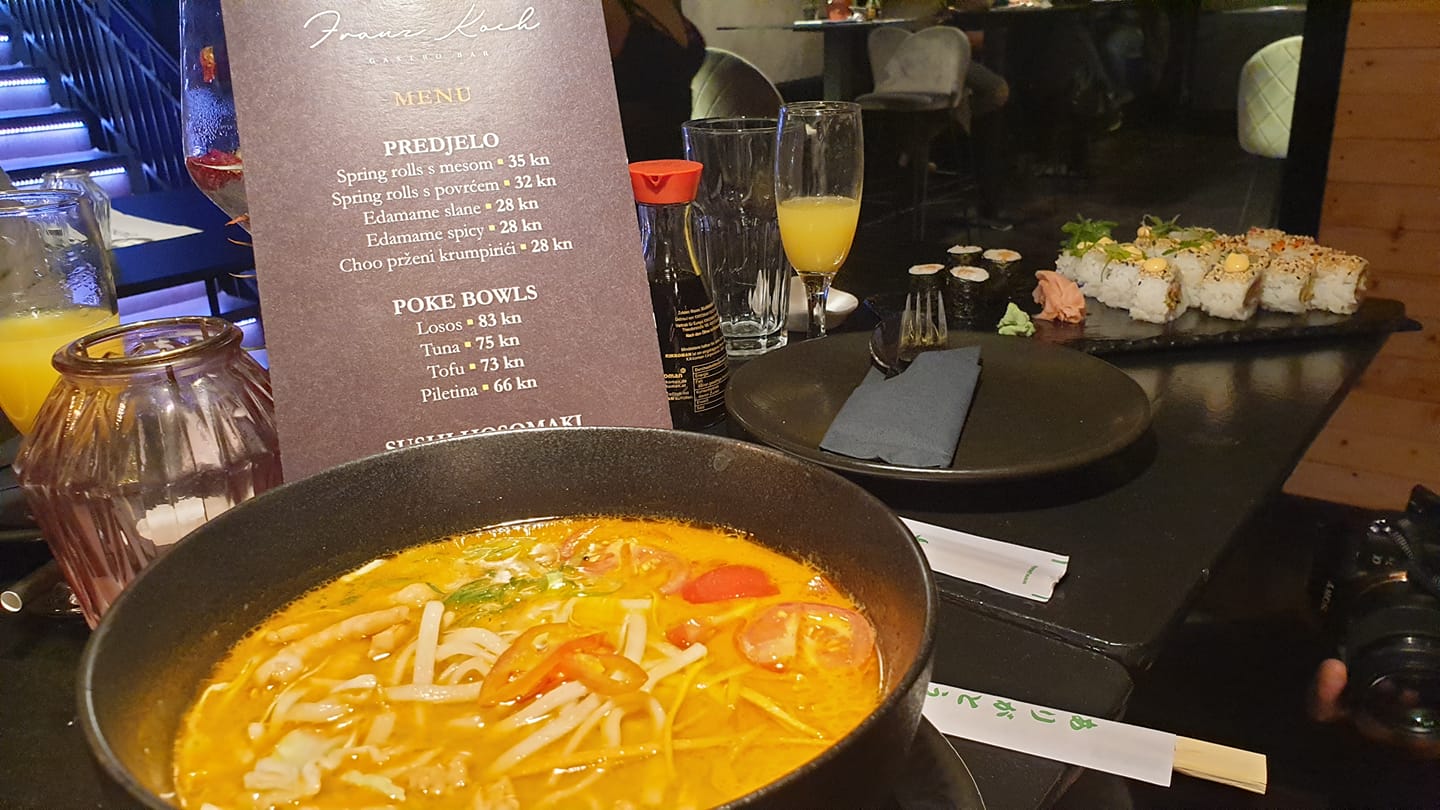
Over breakfast that morning, a British businessman told us about a great new Asian and sushi place that had opened in the old town. We agreed to meet for dinner at Franz Koch, especially as he promised to bring his business partner, the legend that is Srdjan Kovacevic of Orqa.
Together with Steve, they all droned on about drones until I asked how we could put their drone technology and contacts with the best drone pilots in the world to good use to promote tourism in Slavonia.
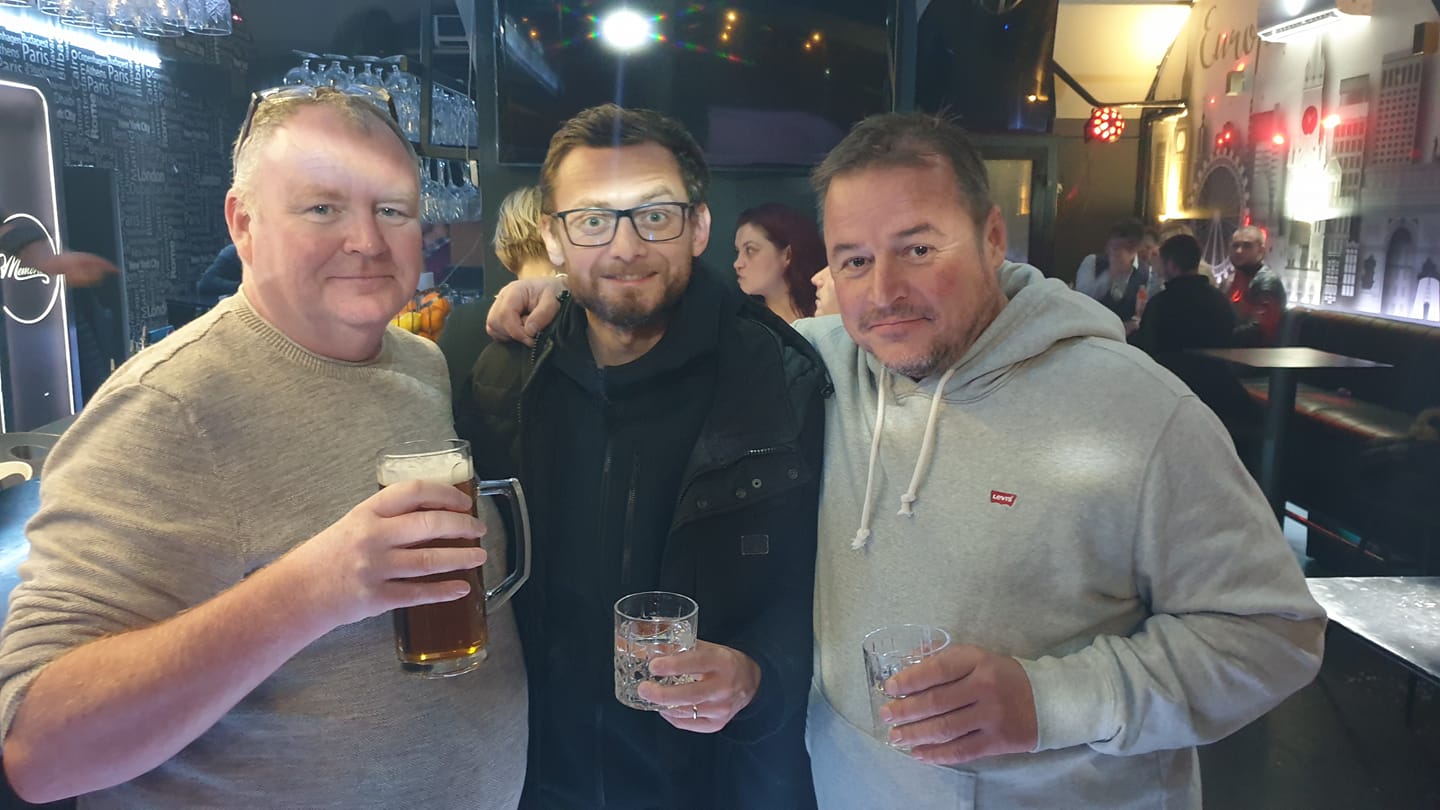
Two gin and tonics later, and the concept of Danube Drone Days, with the world's leading drone pilots coming to Osijek, was born.
Stay tuned.
Slavonia Full of Life, the nighttime edition.
Day 6 - Vukovar and Djakovo
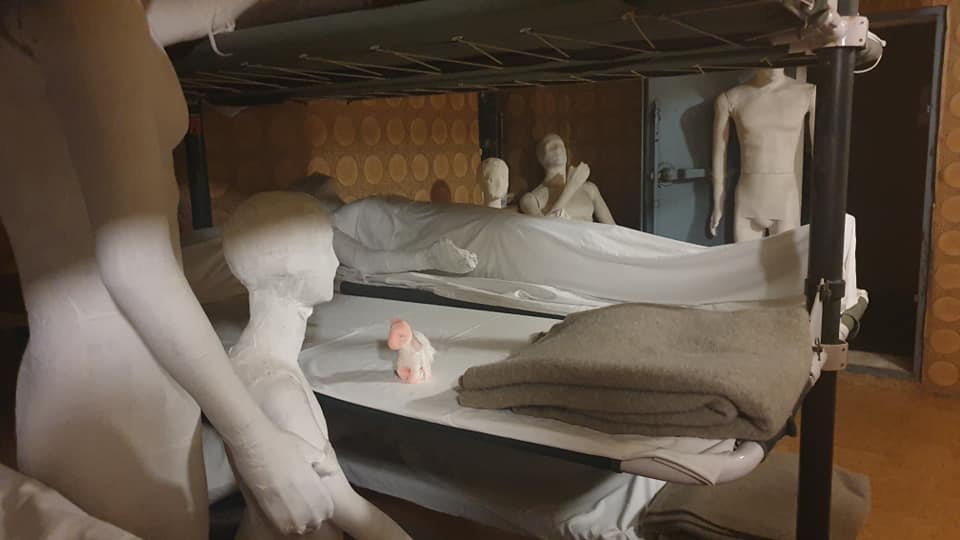
Our final day, and another rollercoaster. We changed the schedule to go back to Vukovar, as we needed to video the hospital museum for our CROMADS project, something that was clearly impossible on November 18, due to all the dignitaries from Zagreb.
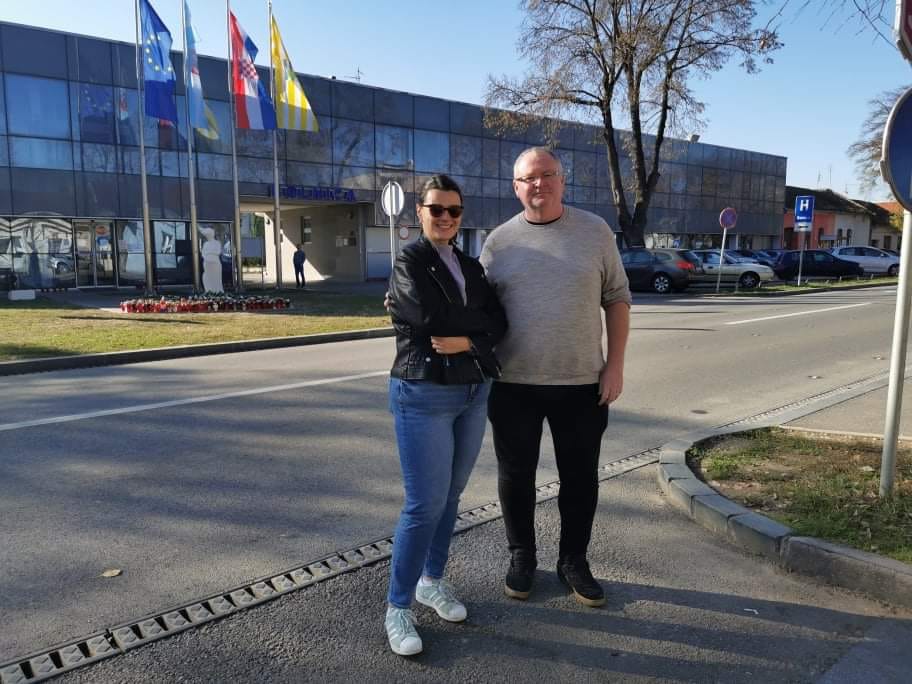
The other reason to return to Vukovar was to offer this young lady a part-time job with CROMADS. Katarina was our excellent guide, and she will be helping us build the eco-system of excellence in eastern Croatia. Her first task as TCN was an interview - The Realities of Life as a Vukovar Tour Guide.

There was just one stop between us and Zagreb, and it was another mind-blower - Djakovo. When Queen Elizabeth II visited the Lipizzaner Stud Farm back in 1972, Tito apparently built an asphalt road, so the locals were very happy. No such luck with my visit, but we had a ton of fun.
Djakovo Cathedral by Steve Tsntserensky, with a little help from a drone.
One of the dangerous chaps from Kulen Travel stood between us and freedom.
"We just have one more surprise for you," said Domagoj over lunch.
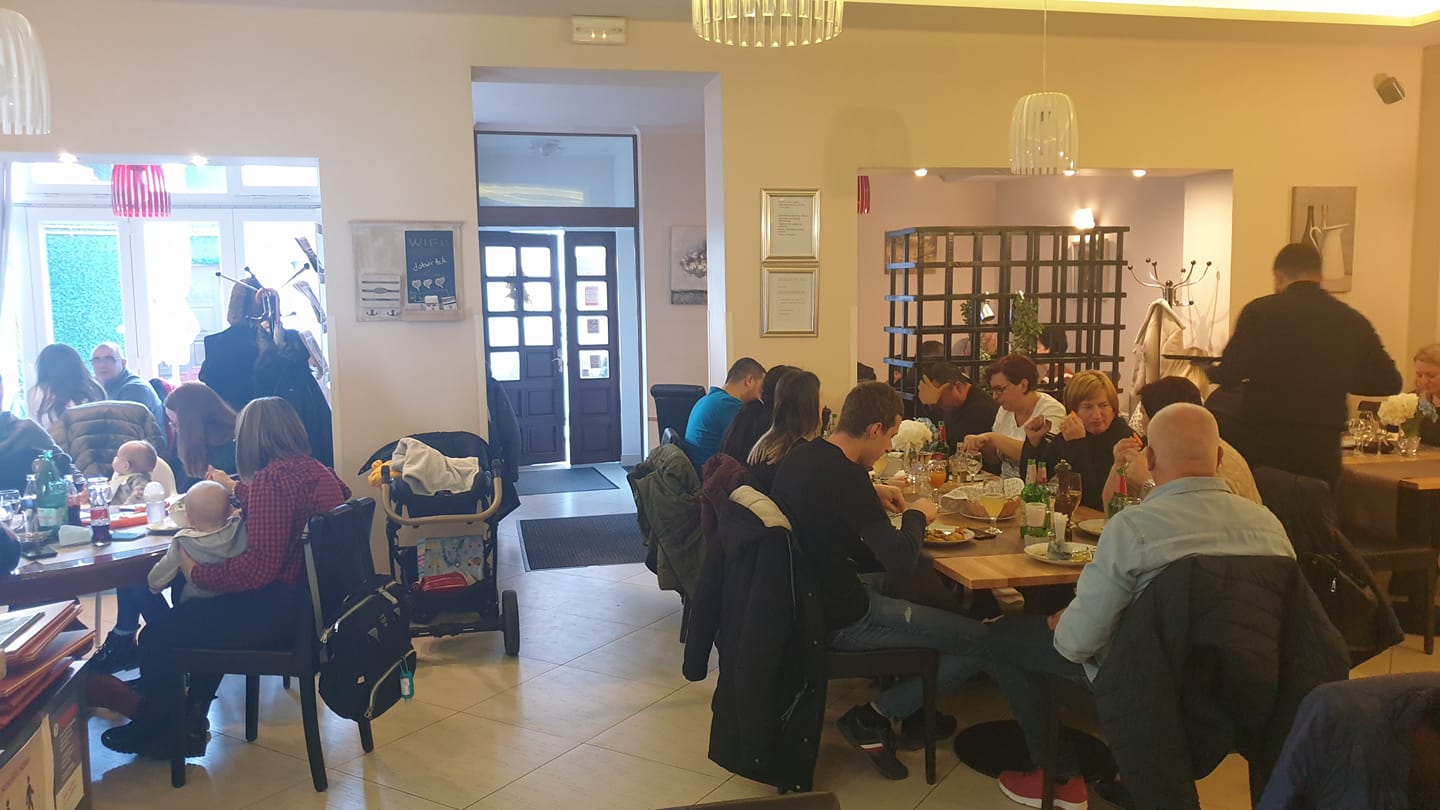
Ah, yes, an excellent lunch at Bistro Loora, which was packed, with not a seat available.
And the surprise?
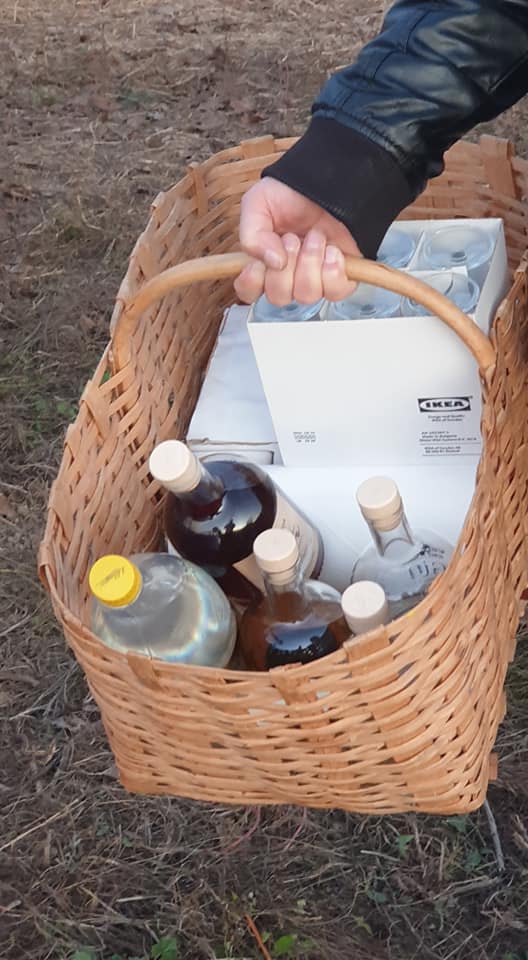
What else but a Slavonian picnic?
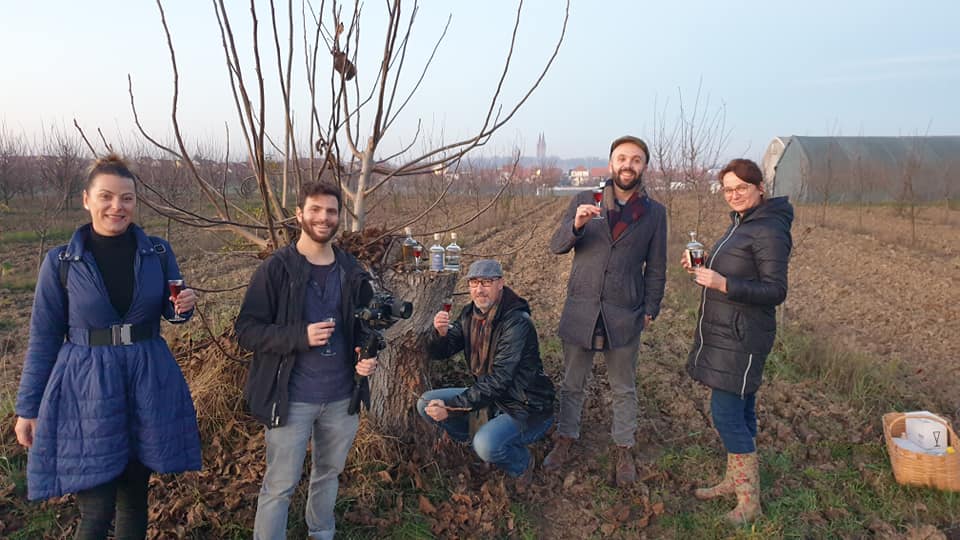
And some quite extraordinary craft gin in an orchard with a magnificent cathedral view.
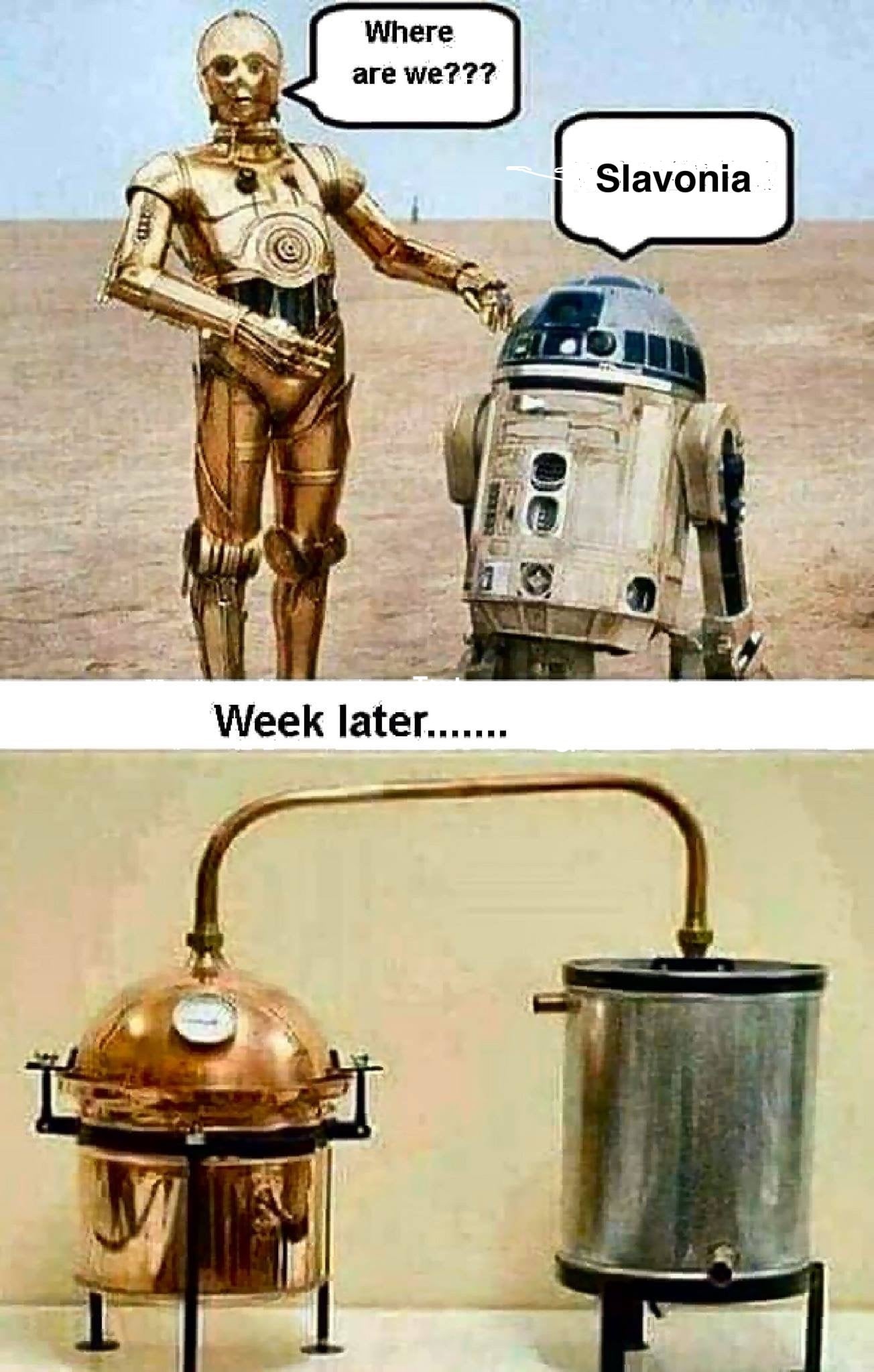
Steve and I compared before and after photographs.
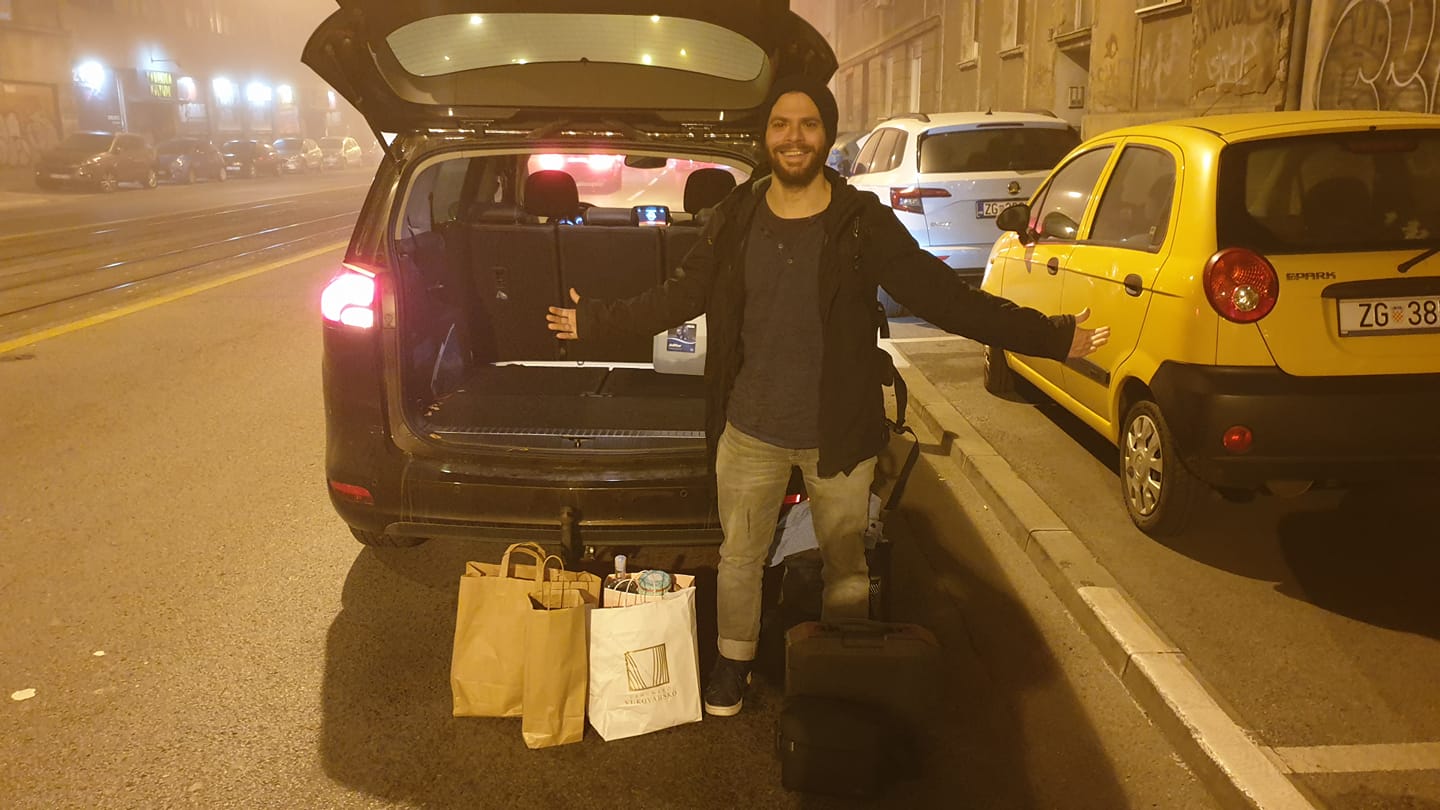
And as I dropped Steve back to where it all began in central Zagreb, I could not help wonder why we don't hear about any of this.
Slavonia was beyond magnificent. Osijek was MUCH more alive than Split or any other city on the Adriatic coast in November.
This region is FABULOUS and much closer to Zagreb than Dalmatia, and yet very few people I know have actually visited.

It is time to change that and to Make Osijek Great Again.
I genuinely think we will not have to try too hard.
So happy birthday Osijek, and may you celebrate your day in style.
My birthday wish for you is that Zagreb lets you breathe, celebrates your magnificence, and starts to put meaningful investment your way to accelerate the process of growth.
My heartfelt thanks to the many of you who contributed what was arguably one of the best weeks of my 18 years in Croatia.
In Slavonia.
In November.
I tried to put my finger on what it was that that made the Slavonian experience so exceptional, apart from the people, and I think it is this:
Nobody who makes the effort to visit Slavonia ever comes home disappointed.
Can You Name the World’s Smallest Town? (And a Few Other Superlatives in Croatia)
Can you name the smallest town in Croatia (and the world)? What about the biggest, oldest, or safest? Take a guess, and then check out our list of champion towns in six different categories
Did you know that the Croatian language doesn’t distinguish between the terms city and town? We call them both grad, which refers to an urbanized area with more than 10,000 inhabitants. Exceptions are made for less populated settlements if they have significant historical, economic or geographic features.
If there’s one thing we don’t lack around here, it’s places of historical significance, and thus our technical nomenclature goes down the drain. You’ll often see very sparsely populated places being referred to as towns - what’s basically a village in terms of population could have easily had a status of a city in medieval times.
When you think about Croatian cities and towns in terms of superlatives - largest, oldest, safest - none of the leading tourist destinations make the cut. The biggest Croatian cities sure have their appeal, but this time around, we’re looking at a few peculiar title holders among Croatian towns.
Smallest: Hum
This medieval hilltop settlement located in central Istria is not only the smallest town in Croatia, but also referred to as the smallest town in the world.
Its exact population is somewhat debatable: Hum had 30 residents at the time of the 2011 census, but more recent sources place the number closer to 20. We’re curious to see what the 2021 census data will show.
Entirely built in stone, Hum is also minuscule in size, but packs a handful of houses, one restaurant, two churches and a cemetery within its town walls. While it's not technically a town, its history, cultural significance and urban structure make it quite a distinctive settlement.
One of the many Istrian legends has it that the giants who built other central Istrian towns in the valley of the Mirna River used the leftover stone blocks to create Hum as one last masterpiece.
It’s a place worth visiting on a tour of Istria: it’s incredibly picturesque and well preserved, is the last stop of the scenic Glagolitic Alley route, and is also the home of biska, a popular Istrian brandy made of rakija, white mistletoe and several other herbs.
Largest: Gospić
Based on population alone, the winner in this category would definitely be Zagreb - expected and a bit too boring for a list of this kind, so we’ll go for different criteria instead. What’s the biggest town in Croatia based on surface area?
If you’d stick with Zagreb as the answer regardless, you’d be wrong. Surprisingly, the biggest town in Croatia only has a population of about 6,500, but is larger in size than Paris, Berlin or Barcelona.
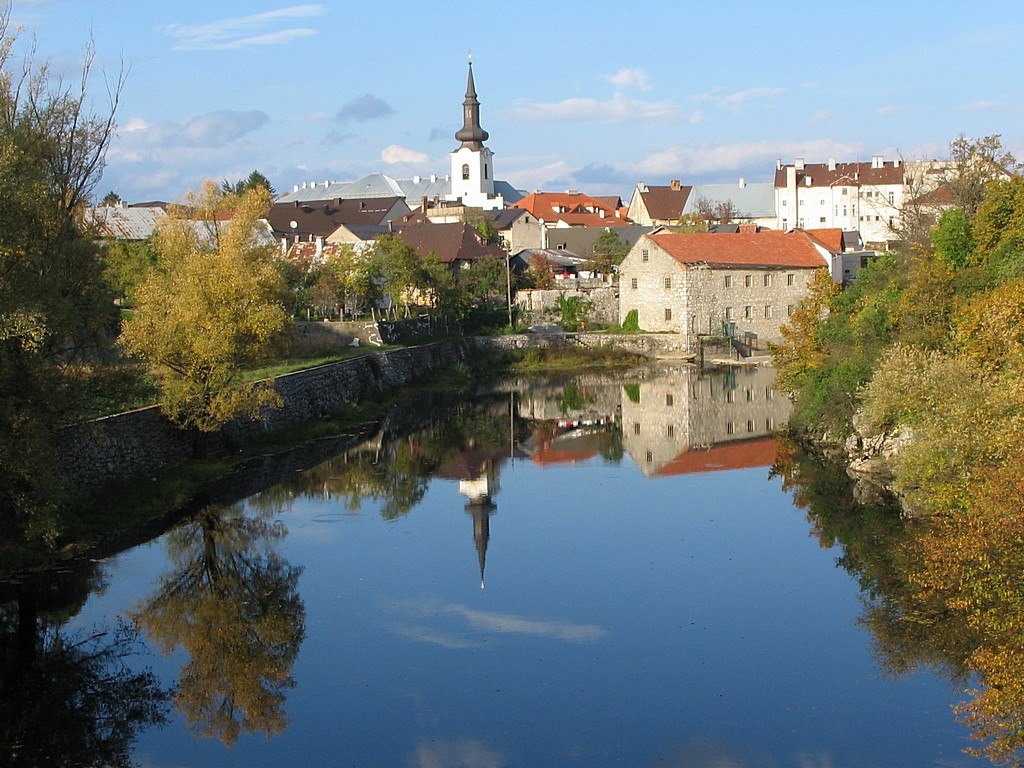
Gospić / iNekic Wikimedia Commons
The biggest town in Croatia is Gospić, with an impressive area of 967 square kilometres. The town itself definitely isn’t that big - it owes its staggering size to some 50 smaller settlements in its wider area that administratively belong to Gospić, as there are no other municipal units nearby to take them under their wing.
Fun fact: Nikola Tesla, the groundbreaking inventor, was born in the nearby village of Smiljan and grew up in Gospić.
Highest: Delnice
Unsurprisingly, we’re heading to a mountainous area to look for an elevation champion. Located in the Gorski kotar region, the town of Delnice sits at an altitude of approximately 700m above the sea level. Its lowest point is situated at an altitude of 210m, and the highest at 1528m!

Delnice / Lan Vlad Wikimedia Commons
We’d be remiss not to mention Begovo Razdolje, officially the highest settlement in Croatia at an altitude of 1028m. It’s located in the same region, on the slopes of Bjelolasica mountain, and has a population of 40. While it’s not technically a town, it’s the only inhabited place in Croatia situated at an altitude over 1000m!
Oldest: Vinkovci
In a country that counts an amphitheatre and a Roman emperor’s palace among its cultural monuments, you’d probably look for the oldest settlement somewhere on the coast. And while it’s true that the Adriatic is lined with some of the oldest towns in Croatia, we have to look inland for the oldest of them all.
The town of Vinkovci in Slavonia has been continually inhabited for 8300 years, making it not only the oldest town in Croatia, but Europe as well!
Vinkovci has a lot to be proud of other than its age: it’s the birthplace of two Roman emperors, home to the oldest known calendar in Europe, and hosts the biggest Croatian folklore festival. Check out the 10 things to know about Vinkovci in this dedicated piece.
Youngest: it’s complicated
How to approach the concept of youth when it comes to a town? We can think of three main ways to look at it:
Among the 128 towns and cities in Croatia, Popovača is the one which gained the legal status of a town most recently. It used to be a municipality and was ‘upgraded’ to a town in 2013, effectively becoming the youngest town in Croatia in terms of administrative status.
If we ditch the legal criteria and focus on how long it’s been since the inception of a certain settlement, the youngest town in Croatia is Raša. It’s located in south-eastern Istria and was purposely designed and built as a mining town in the 1930s during Mussolini’s colonization of the region. Two pairs of streets lined with former miners’ houses meet at the central square, where you’ll find the church of St Barbara, uniquely built in the shape of an overturned mining cart.
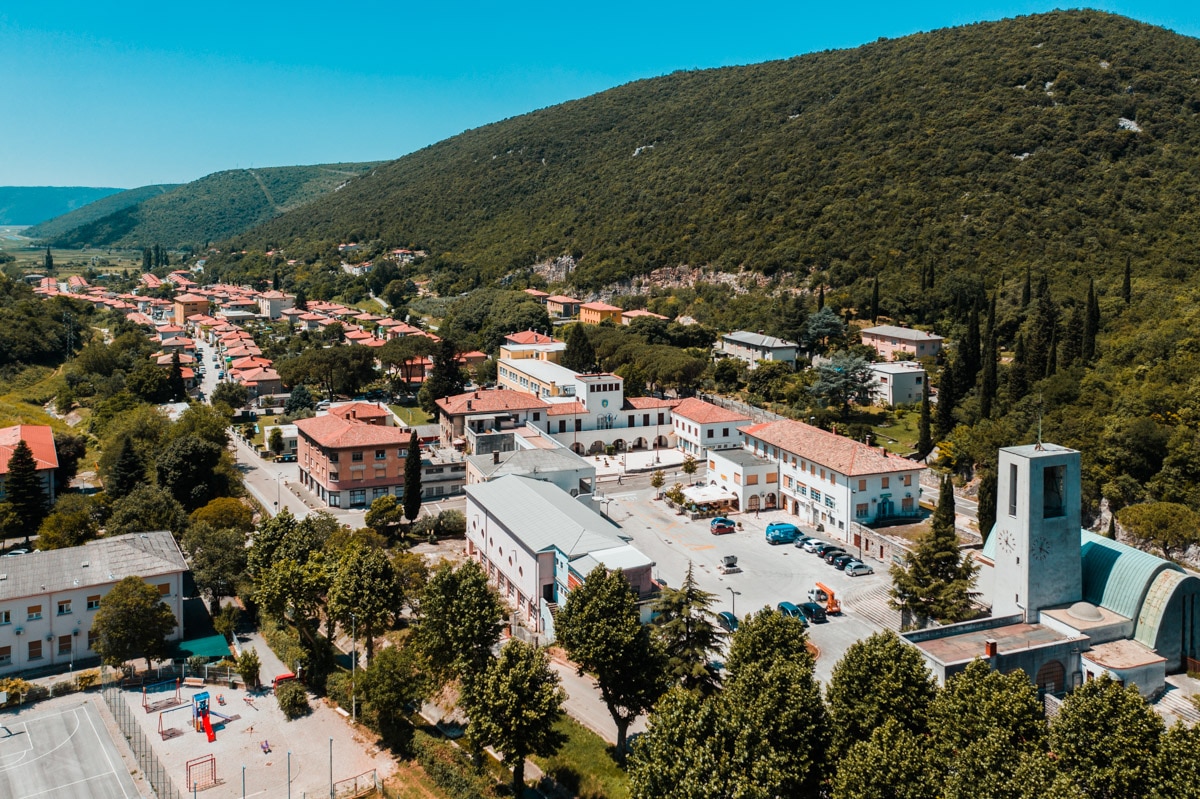
Raša © Raša Tourist Board
And finally, what about the population? Well, this is a tough one to track down as the demographic situation varies from year to year, and data isn’t always readily available. With apologies to any other town that potentially took over the title at some point, we’ll declare Solin to be the youngest town in Croatia population-wise. Located near Split in Dalmatia, Solin has a population of some 30,000 inhabitants, 6,500 of which are under 18 years of age. The average age in Solin is 34,3 years - well below the Croatian average of 43,6 which ranks us among the oldest populations in all of Europe.
Safest: Sinj
Croatia is widely considered to be a safe country overall. Its population definitely seems to think so: a recent report published by Numbeo and represented on a map by Landgeist shows that Croatia is one of the countries in Europe where people feel safest walking alone at night. It ranks second, after Slovenia - read more here.
What’s the safest place in the second safest-feeling country in Europe, then? For this we turn to actual statistics in an annual report published by the magazine Zaštita and the Faculty of Economics in Zagreb. They rank the 29 biggest Croatian cities and towns according to four separate crime rates (assaults, traffic offences, property crimes and drug abuse).
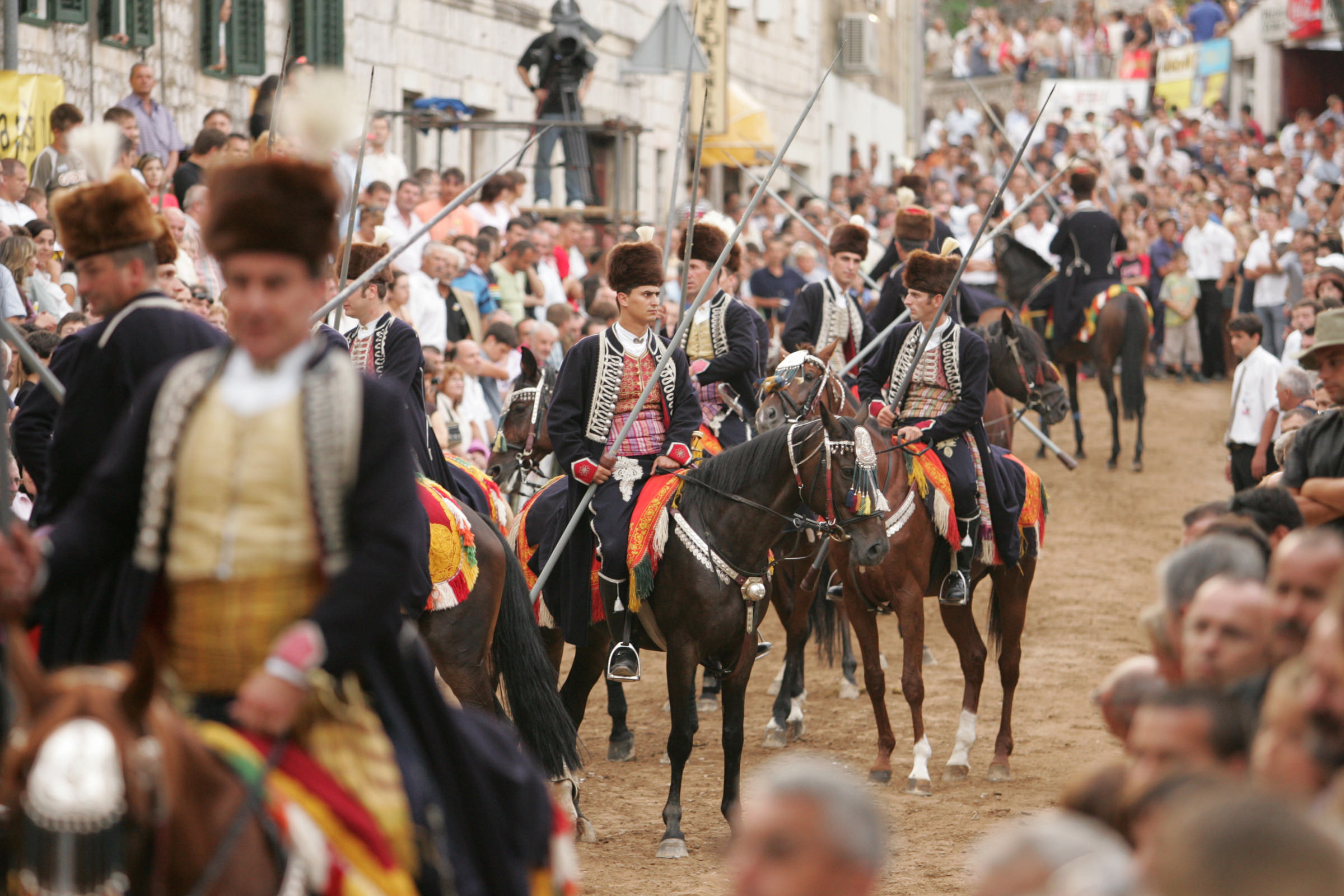
Sinjska Alka © Romulic and Stojcic
The town of Sinj, located in the Dalmatian hinterland, ranked safest in Croatia four times in a row in recent years. It’s a nice title for Sinj and just one of things it’s known for - the most famous certainly being Sinjska Alka.
Inscribed on the UNESCO list of intangible cultural heritage, Sinjska Alka is a traditional knight’s game held every year in August. It commemorates the victory of 700 Croatian soldiers over the army of 60,000 Turkish invaders in 1715 - a report from a reenactment of the battle is available here.


